CLEANING
Let’s talk about

TRENDS
Cleaning sector innovations in 2025
TECHNOLOGY
The development of cobotics market
SUSTAINABILITY
Low-impact practices along the cleaning chain
The hands-free dispensing solution with an eco-friendly heart




TRENDS
Cleaning sector innovations in 2025
TECHNOLOGY
The development of cobotics market
SUSTAINABILITY
Low-impact practices along the cleaning chain
The hands-free dispensing solution with an eco-friendly heart











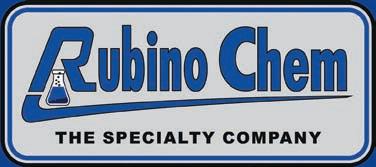


















HiMiX Professional ensures high performance, respect for surfaces and the environment, and guarantees the safety of customers and workers. Compliant with HACCP control plans, it ensures the highest standards of cleanliness and hygiene.
For more information, visit our website FOR OVER 60 YEARS, HIGH-QUALITY, EFFICIENT, AND RELIABLE PROFESSIONAL FORMULATIONS




Bathrooms are an essential business card for every enterprise. Whether in hotels, restaurants, of ces or public spaces, ensuring a constant supply of toilet paper, hand towels and soap is crucial to offering a positive experience for those who enjoy it. Celtex plays its part with cutting-edge dispensing technologies, that optimize consumption while improving management and environmental sustainability. Key factors for both end-users and managers, conscious of customer satisfaction’s impact on venue reputation. Choosing Celtex means relying on safe and performing solutions, highly effective even in huge traf c contexts.
The electronic Megamini E-Control range combines the ef ciency of no-touch technology, synonymous with utmost hygiene, with performance and waste reduction. Through the simple swipe of the hand near the frontal frame, users only touch the dispensed product, preventing cross-contamination. The E-Control Hand Towel model guarantees a smart control over consumptions thanks to the sheet-by-sheet extraction, programmable in the dispensing interval time and sheet length. These features allow for customization according to traf c and users. Moreover, the ingenious “stub roll” mechanism ensures continuous paper supply: when a roll is nearly nished, it transfers to a secondary internal casing, allowing full
use before switching to a new roll. Within the E-Control range, there is also the Foam Soap system, which dispenses only the necessary amount of soft foam, scented with lemon or thyme and rosemary, with a simple hand wave. It optimizes usage for effective handwashing while ensuring hygiene and safety.
For high-traf c restrooms where toilet paper availability is a priority, Celtex has developed Megamini Revolver, an innovative gravity-based dispensing system. Designed to hold three rolls of pure pulp toilet paper, Revolver guarantees up to 300 metres of uninterrupted autonomy. Its actual revolution lies in its functioning: when a roll is nished, gravity rotates the cog and positions the next roll in its place, ready to be used. This system prevents the risk of leaving users without paper. As an extra advantage, Megamini Revolver holds Celtex Magnum toilet paper with patented Flutech® technology, which facilitates the rapid dissolving of paper in water in as little as 9 seconds, preventing clogging and ensuring absolute ef ciency, especially in high-traf c bathroom areas. A further proof of how technology and environmental respect can go hand in hand. The modern, minimalist design of Megamini Systems adds a touch of elegance to any restroom, blending functionality with aesthetics.

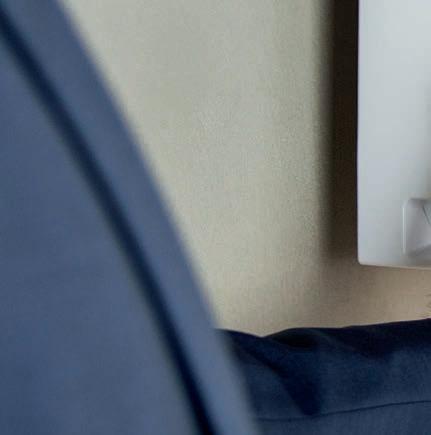

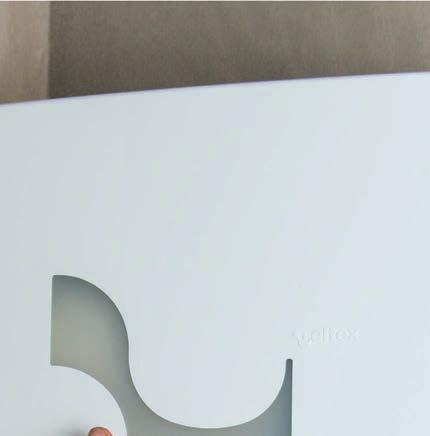








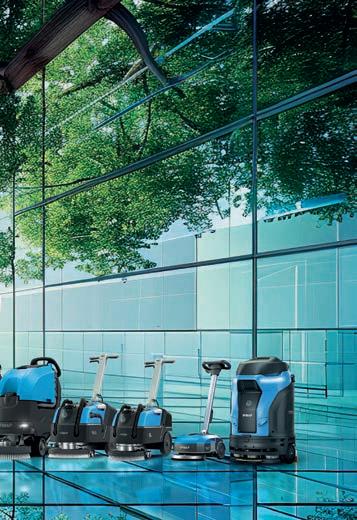


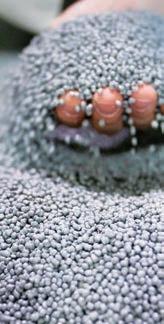

















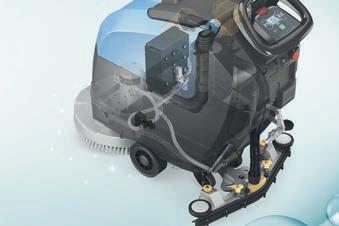

















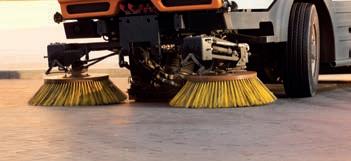


Industrie Celtex is a multinational company operating in Italy and Europe, specialized in production of tissue paper products and dispensing systems for Away from Home Sector, with nine European production plants and over 500 employees.Industrie Celtex pursues quality, innovation and sustainability.










SUPPLEMENT T n
ISSN 2612-4068
Editor-in-Chief iorgio lbonetti
Editorial director rnella anetti ornella. anetti quine.it
Technical director auri io edrini


Editorial coordinator hiara celsi c.scelsi lswr.it h.





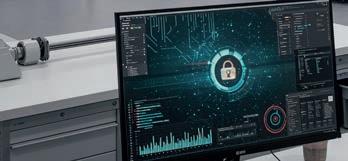



Editors ristina ardinali c.cardinali lswr.it h. imone iapparelli s.ciapparelli lswr.it h. oredana itulano l.vitulano lswr.it h.
Collaborators
rancesco estri, rancesca e ecchi, rancesca eoni, iccol uongo, abri io incelli, iacomo Torren i
Graphic design lisabetta elfini e.delfini lswr.it
Layout LSWR
Image library hutterstock
Technical-scientific consultants for the section
Environmental hygiene hiara assi ra iano assi
Circulation and subscription office laria Tandoi i.tandoi lswr.it
Sales manager ostantino ialfi c.cialfi lswr.it h.
Advertising and development ilippo iola f.viola lswr.it doardo ossi e.rossi lswr.it lena rusadelli e.brusadelli lswr.it
Production ntonio ovene a.iovene lswr.it h. Printing alli arese
Prices and subscriptions nnual subscription euros nnual subscription abroad euros ack copy euros rice per copy . euros abbonamenti.quine lswr.it h. www.quine.it
www.dimensionepulito.it
Quine Srl ia . padolini, ilano www.quine.it info quine.it h.
Responsibility imensione ulito periodico mensile registrato autori a ione del Tribunale di ilano . del . . . uine iscritta al egistro peratori della omunica ione n. del . a pubblica ione o ristampa di articoli e immagini della rivista deve essere autori ata per iscritto dalleditore. li articoli pubblicati su imensione ulito sono sotto la responsabilit degli autori. manoscritti e i disegni pubblicati non saranno restituiti.
T i sensi dell art. egolamento uropeo per la rote ione dei ati ersonali di seguito , i dati di tutti i lettori saranno trattati sia manualmente, sia con strumenti informatici e saranno utili ati per l invio di questa e di altre pubblica ioni e di materiale informativo e promo ionale. e modalit di trattamento saranno conformi a quanto




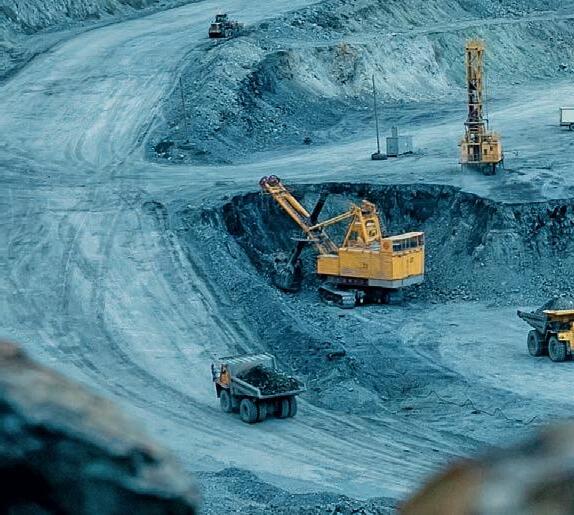
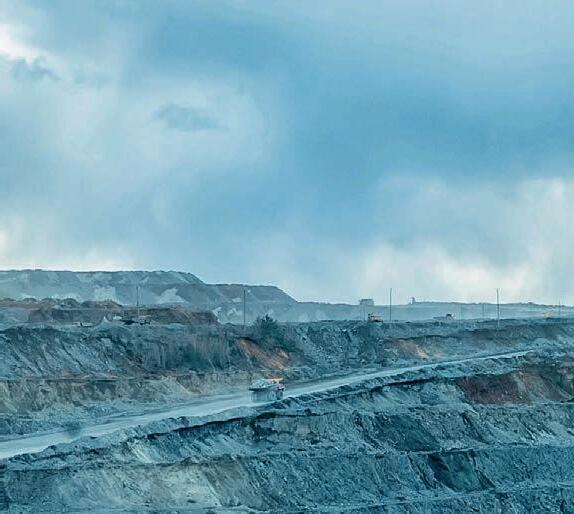





The new European project CRITERIA, funded by the Horizon program under the Marie Skłodowska-Curie Doctoral Networks and involving the Polytechnic University of Turin in the role of coordinator of activities
The main theme of the four-year CRITERIA project is the characterization, cultivation and processing of mining residues in order to recover critical raw materials. The goal of the project is the activation of 13 doctoral pathways jointly managed by the different partners to provide academic and industrial training that facilitates the entry into the labor market of as many experts in the considered eld.
This is fully consistent with the European Union’s goal of ensuring the security of supply of strategic critical raw materials for the development of the economy and the mitigation of associated risks. In fact, the European regulation “Critical Raw Material Act,” intends to address the projected doubling of demand for strategic critical raw materials in the European Union by 2050: the training of suitable professionals at the undergraduate, master’s and doctoral level is therefore an integral part of the European challenge related to critical raw materials that the 27 countries of the European Union are about to face. In addition to the Polytechnic University of Turin, four other European universities are partners in the initiative - the University of Calabria, Universitat Politecnica de Catalunya in Barcelona, Instituto Superior Tecnico in Lisbon, and
KTH in Stockholm - and four industrial players operating in different countries: Minerali Industriali, Atalaya Mining, Circular Water Technologies, and Imhoit. «The collaboration of European universities, aided by industrial partners, is essential for the development of training and research activities in the area of characterization, cultivation and processing of primary minerals and residues useful for the recovery of critical raw materials, explains Mariachiara Zanetti, professor at DIATI, vice chancellor for territorial, national and European policies at Polytechnic of Turin and scienti c contact for the project. Most of the European universities participating in the CRITERIA project, including the Polytechnic of Turin, are part of the European Alliance Unite!, aimed at promoting academic collaboration activities within the European Union».
Chapter 5 of Regulation (EU) 2024/1252 of the European Parliament and of the Council of April 11, 2024 (in OJEU L, May 3, 2024) takes into account principles related to environmental protection. Thus, for example, the benchmarks include “the Union’s recycling capacity,
including all intermediate recycling steps, and such that at least 25 percent of the Union’s annual consumption of strategic raw materials is covered and an increasing amount of each strategic critical material in waste is recycled.” Or, under Section III (“Permit Procedure”), Article 12 is headed “Environmental Assessments and Permits.” Entirely dedicated to the environment is then Chapter 5 (“Sustainability”), which in turn includes Sections 1 (“Circularity”) and 2 (“Certi cation and Environmental Footprint”).
Below is part of the text of the Regulation establishing a framework to ensure a safe and sustainable supply of critical raw materials and amending Regulations (EU) No. 168/2013, (EU) 2018/858, (EU) 2018/1724, and (EU) 2019/1020.
Section 1. Benchmarks
1. The commission and member states shall strengthen the different stages of the value chain of strategic raw materials through the measures in this chapter in order to:
a) ensure that, by 2030, the Union’s capacity for each strategic raw material is increased signi cantly and such that,

overall, the Union’s capacity approaches or reaches the following benchmarks: the Union’s mining capacity is such as to enable the extraction of minerals of economic interest, ores or concentrates necessary to cover at least 10 percent of the Union’s annual consumption of strategic raw materials, to the extent possible relative to the Union’s reserves; the Union’s processing capacity, including all intermediate processing steps is such that at least 40 percent of the Union’s annual consumption of strategic raw materials is covered; the Union’s recycling capacity, including all intermediate recycling steps, is such that it covers at least 25 percent of the Union’s annual consumption of strategic raw materials and is such that it recycles an increasing amount of each strategic critical material in waste.
b) Diversify the Union’s imports of strategic raw materials to ensure that, by 2030, the Union’s annual consumption of each strategic raw material at any relevant processing stage can rely on imports from several third countries or Overseas Countries or Territories (OCTs), and that no third country covers more than 65 percent of the Union’s
annual consumption of these strategic raw materials.
2. The Commission and the Member States shall undertake efforts to stimulate technological progress and ef cient use of resources in order to contain the projected increase in the consumption of critical raw materials in the Union below the baseline projection referred to in Article 44 (1) through the relevant measures in this section and Chapter 5, Section 1.
3. By January 1, 2027, the Commission shall adopt a delegated act in accordance with Article 38 to supplement this Regulation by establishing benchmarks for the Union’s recycling capacity expressed in terms of the share of available strategic raw materials in the relevant waste streams.
Delegated acts adopted pursuant to the rst paragraph shall specify the waste streams and the strategic raw materials they contain for which suf cient information on relevant waste volumes and strategic raw material content is available based on the reporting requirements of Regulation
The Politecnico di Torino participates in the main research funding programmes offered by the European Union and other international, national, regional and local bodies, with the main objective of attracting funds for research projects aimed at solving major societal challenges and industrial innovation.
The main theme of the fouryear CRITERIA project is the characterization, cultivation and processing of mining residues in order to recover critical raw materials.

(EU) 2023/1542, Directive 2000/53/ EC of the European Parliament and of the Council, Directive 2008/98/EC, and Directive 2012/19/EU of the European Parliament and of the Council, to enable the estimation of the Union’s recycling capacity expressed in terms of the share of strategic raw materials contained in the relevant waste streams.
In addition, the delegated acts adopted pursuant to the rst paragraph shall establish a benchmark for the Union’s recycling capacity based on the recycling capacity for each strategic feedstock contained in the relevant waste streams identi ed pursuant to the second paragraph. The Commission shall set the benchmark for recycling capacity referred to in the third paragraph based on the following elements: the recycling capacity of the Union expressed in terms of the share of available strategic raw materials in the relevant waste streams; the extent to which strategic raw materials can be recovered from such waste streams, taking into account technological and economic feasibility; other targets set in other relevant legal acts of the Union for the recovery of strategic raw materials from waste.

AT THE UNDERGRADUATE, MASTER’S AND DOCTORAL LEVEL IS AN INTEGRAL PART OF THE EUROPEAN CHALLENGE RELATED TO CRITICAL RAW MATERIALS THAT THE 27 COUNTRIES OF THE EUROPEAN UNION ARE ABOUT TO FACE
paragraph if, as a result of the assessment referred to in Article 48(2), information on relevant waste volumes and strategic raw material contents of other waste streams becomes available.
resettlement, the potential for quality job creation and meaningful engagement with local communities and social stakeholders, and the use of transparent business practices with appropriate compliance policies designed to prevent and minimize risks of negative impacts on the proper functioning of public administration, including bribery and corruption; for projects in the Union, the establishment, operation or production of the project would have cross-border bene ts beyond the member state concerned, including for downstream sectors; for projects in third countries that are emerging markets or developing economies, the project would be mutually bene cial to the Union and the third country concerned and would add value in that third country.
The Commission shall be empowered to adopt delegated acts in accordance with Article 38 to amend this Regulation by updating the delegated acts adopted pursuant to the rst subparagraph of this
1. Following an application by the project proponent in accordance with the procedure set forth in Article 7, the Commission shall recognize as strategic those raw material projects that meet the following criteria: the project would signi cantly contribute to the Union’s security of supply of strategic raw materials; the project is or will become technically feasible within a reasonable time frame, and the projected production volume of the project can be estimated with a suf cient level of reliability; the project would be implemented in a sustainable manner, particularly in terms of monitoring, preventing and minimizing environmental impacts, preventing and minimizing socially negative impacts through the use of socially responsible practices, including respect for human rights, indigenous peoples, and workers, particularly in the case of involuntary
2. The Commission shall evaluate compliance with the recognition criteria in paragraph 1 of this Article based on the elements to the evidence in Annex III. The Commission shall be empowered to adopt delegated acts in accordance with Article 38 to amend Annex III in order to adapt to technical and scienti c progress the elements and evidence to be taken into account in assessing compliance with the recognition criteria set out in paragraph 1 of this Article or to take into account changes in the international instruments listed in Annex III, point 5, or the adoption of new international instruments relevant to compliance with the criterion set out in paragraph 1 (c) of this Article.
3. The recognition of a project as a strategic project under this Article shall not affect the requirements applicable to the project in question or to the project proponent under Union, national or international law.
SOURCES
https://www.polito.it/ https://www.consilium.europa.eu/it/ infographics/critical-raw-materials/#0 http://data.europa.eu/eli/reg/2024/1252/oj
edited by SIMONE CIAPPARELLI
The path to sustainability is a continual effort that requires adaptability, ongoing education, and responsiveness to new developments. By implementing effective strategies, companies within the industrial cleaning industry can bring about significant and enduring transformation
The transition to a sustainable industry has signi cantly impacted the skills needed in the workforce, including the cleaning sector, requiring not just technical expertise but also a deep commitment to environmentally responsible practices. Achieving sustainability goes beyond merely using eco-friendly products or technologies; it necessitates a holistic approach to workforce development. The report by EFCI Best practice guide: green skills training for the industrial cleaning sector provides strategies for integrating green skills into the industrial cleaning workforce, emphasizing an approach that combines technical training, stakeholder collaboration, and cultural change to foster sustainable operations. The insights that shape this new approach to professional cleaning are gained through the recent research SK Clean II Project, which identi ed several critical areas that form the foundation of effective green skills integration in the industrial cleaning sector. These best practices focus on building comprehensive training programs, fostering collaboration among stakeholders, and
overcoming the nancial and cultural barriers to adopting sustainable practices. Central to these efforts is the need for practical, hands-on training that equips employees with technical, regulatory, and soft skills tailored to their roles, alongside partnerships with suppliers and social organizations to provide resources and support. By taking a comprehensive approach to these elements, companies can build a team equipped to adopt and maintain sustainable practices while adhering to industry regulations and ful lling client requirements.
Well-designed green skills training programs are essential for successfully transitioning the industrial cleaning sector toward sustainable practices. Effective professional cleaning education requires a well-rounded approach, blending hands-on experience with theoretical instruction to ensure workers con dently implement eco-friendly methods in their daily routines. Training should be tailored to different roles, offering fundamental
Let’s talk about




knowledge for cleaning staff, leadership guidance for supervisors, and strategic sustainability planning for managers. Moreover, diverse delivery formats, including workshops, online courses, and real-world scenario-based training, play a crucial role in reinforcing skills and promoting lasting behavioral change. Beyond building essential competencies, these programs also empower employees to advocate for sustainability within their organizations, creating a ripple effect that contributes to broader environmental objectives.
Creating a comprehensive green skills curriculum is crucial for equipping the industrial cleaning workforce to align with sustainability requirements. Recent studies highlight the importance of incorporating eco-conscious product usage, energyef cient cleaning methods, and effective waste management and recycling. An impactful green skills curriculum should cover: familiarity with different product categories; awareness of product labels, hazard signs, and certi cations; expertise in tools and techniques for tracking energy consumption; as well as pro ciency in recycling processes and waste identi cation and separation.

theoretical knowledge across the workforce. These modules provide exibility, allowing employees to learn at their own pace while ensuring that all team members receive the same foundational understanding of green practices. Topics covered often include an overview of environmental regulations, the bene ts of eco-friendly products, and examples of successful green initiatives within the industry. Real-world scenarios bridge the gap between theory and practice by immersing employees in situations that mimic daily operational challenges.


Tailored training methods are essential for equipping employees in the industrial cleaning sector with the skills necessary to adopt and implement green practices effectively. By customizing the training approach to meet the diverse needs of roles within the workforce, organizations can ensure practical application, theoretical understanding, and real-world readiness.
Hands-on practical workshops are particularly effective for cleaning agents and supervisors. These sessions provide employees with direct, experiential learning opportunities where they can practice techniques such as using biodegradable cleaning products, operating energy-ef cient equipment, and segregating waste for recycling. E-learning modules complement handson training by delivering consistent


By integrating these tailored training methods - combining practical workshops, theoretical elearning, and real-world scenarios - organizations can develop a comprehensive and effective training program. This approach ensures employees are not only technically pro cient but also prepared to navigate the complexities of sustainability in their daily roles, contributing to the successful implementation of green practices throughout the organization.
Successful workforce development guarantees that all employees play a role in promoting sustainable practices while supporting a uni ed organizational commitment to environmental responsibility.
For cleaning staff, training emphasizes building essential green skills that in uence routine tasks. This includes the appropriate use of environmentally friendly cleaning solutions, such as biodegradable and non-toxic products, as well as compliance with proper waste management protocols. Workers in these positions need to recognize how their actions - such as sorting waste, reusing materials, and reducing resource consumption - play a role in achieving the company’s broader sustainability objectives. Interactive workshops and practical demonstrations are especially useful for developing these skills, as they provide employees with opportunities to apply their knowledge in real-life situations.

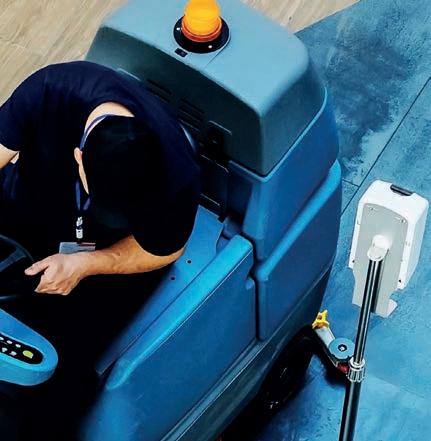





to sustainability.
For managers, workforce development focuses on advanced skills that align with strategic sustainability planning. Managers must understand broader sustainability trends, regulatory landscapes, and client expectations, enabling them to design and implement long-term initiatives that align with organizational goals.
Manager training covers areas like resource distribution for eco-friendly practices, nancial strategies for sustainability investments, and methods for evaluating the impact of green initiatives. Additionally, managers need pro ciency in engaging stakeholders, including collaborating with suppliers, trade unions, and policymakers to establish strong support networks for sustainability efforts.
While technical knowledge is key to the green transition in the industrial cleaning industry, soft skills - especially in client communication - are equally important. Clearly articulating the advantages of sustainable practices helps foster trust, align expectations, and enhance an organization’s reputation.
Supervisors require an intermediate level of knowledge that enables them to oversee and manage green initiatives effectively. Training for supervisors emphasizes the coordination and monitoring of sustainable practices within their teams. This includes setting up systems for waste management, ensuring the correct use of eco-friendly products, and identifying opportunities to improve energy ef ciency during cleaning operations. Supervisors are also trained to provide feedback and mentorship to cleaning agents, fostering a team-wide commitment
Manager training covers areas like resource distribution for eco-friendly practices, nancial strategies for sustainability investments, and methods for evaluating the impact of green initiatives. Additionally, managers need pro ciency in engaging stakeholders, including collaborating with suppliers, trade unions, and policymakers to establish strong support networks for sustainability efforts. While technical knowledge is key to the green transition in the industrial cleaning industry, soft skills - especially in client communication - are equally important. Clearly articulating the advantages of sustainable practices helps foster trust, align expectations, and enhance an organization’s reputation. Converting training materials into local languages is a crucial aspect of localization. This allows employees to fully understand and interact with
the content without language obstacles impeding their learning. In addition to straightforward translation, materials should be culturally tailored to align with regional customs, values, and communication styles. For instance, examples, analogies, or visual aids used in training should be relevant and recognizable within the employees’ cultural and professional contexts.
Keeping a current training program is crucial to ensuring the ongoing effectiveness and relevance of green skills initiatives in the cleaning industry. Studies highlight the fast-paced changes in environmental regulations, cleaning technologies, and compliance requirements, underscoring the importance of frequently updating and improving training resources. Regular annual updates to the curriculum are considered a best practice to ensure that employee training meets the latest industry expectations and sustainability objectives. The rst step in updating the curriculum involves monitoring changes in environmental regulations and standards. As governments and international bodies frequently revise policies to address emerging environmental challenges, training programs must incorporate these updates to ensure compliance. Advancements in technology also necessitate regular updates. With the continuous development of eco-friendly cleaning products and energy-ef cient equipment, employees need training to effectively use these innovations. Updating the curriculum to include handson sessions with the latest tools ensures that the workforce remains pro cient and capable of leveraging new technologies to enhance operational ef ciency and sustainability.
Standardized certi cations act as an of cial recognition of an employee’s competence in sustainable cleaning methods. These credentials con rm that individuals have nished relevant training
and shown expertise in essential aspects like the use of eco-friendly products, energy-saving cleaning practices, and waste disposal. By aligning these quali cations with industry benchmarks and environmental laws, companies ensure their staff is both pro cient and in compliance with legal and professional requirements.
Certi cations provide multiple bene ts for both employees and organizations. For employees, they act as tangible proof of expertise, enhancing career development opportunities and fostering a sense of accomplishment. For organizations, certi cations demonstrate a commitment to high standards and environmental responsibility, which can be a decisive factor for clients seeking sustainable service providers. To ensure widespread adoption and consistency, certi cation programs should be developed in collaboration with industry stakeholders, including trade unions, NGOs, and regulatory bodies.
Through the adoption of standardized certi cations, the cleaning industry can enhance its consistency, professionalism, and trustworthiness in addressing sustainability. These certi cations not only recognize the expertise of individual workers but also uplift the entire sector, establishing it as a frontrunner in ecofriendly practices and environmental responsibility.
Implementation strategies offer a clear framework for organizations to pinpoint training requirements, assess the effectiveness of programs, and expand initiatives in a way that maximizes both participation and results. From performing needs assessments to measuring program outcomes, each phase ensures that training remains relevant, accessible, and in harmony with both organizational objectives and industry benchmarks. By adhering to these strategies, organizations can develop a capable, motivated workforce that drives sustainability efforts and meets long-term environmental goals. A comprehensive needs assessment serves
as the cornerstone of any successful green skills training initiative. By identifying skill gaps and gaining insight into the speci c training demands of the workforce, organizations can create focused programs that tackle real-world challenges and are aligned with their sustainability objectives.
Ef cient monitoring and assessment are essential for guaranteeing the success and lasting signi cance of green skills training initiatives. These activities offer valuable insights into the program’s effectiveness, identify areas needing enhancement, and ensure that the program stays aligned with changing industry standards and organizational objectives. By gathering and evaluating data on performance and participant feedback, organizations can make well-informed modi cations to their training efforts, fostering ongoing progress.
To assess the effectiveness of the training, organizations should utilize both qualitative and quantitative methods. Performance metrics such as waste reduction, energy savings, and increased use of eco-friendly products offer tangible evidence of the program’s success. These metrics can be collected through direct observation, operational data, or sustainability audits conducted before and after training.
Employee feedback is another vital component of monitoring impact. Surveys, focus groups, and interviews with participants provide insights into their learning experiences, challenges faced during the training, and their ability to apply new skills in daily operations.
Incorporating green skills into the professional cleaning sector has become essential due to increasing environmental concerns and changing regulatory requirements. This shift calls for a thoughtful and cooperative strategy that involves every tier of the workforce, incorporates cutting-edge technologies, and ensures that company goals are in harmony with sustainability targets.
The EFCI (European Cleaning and Facility Services Industry) is an international non profit association and is the recognised Social Partner by the European Commission for the sector. It brings together 14 associations representing the industry at national level, employing over 4.2 million people in more than 297,000 companies. Some of EFCI’s core objectives are: communicating the industry’s needs and priorities to the policy makers at the EU level; promoting the industry and enhancing the sector’s competitiveness and image; organising and implementing actions and projects at European level.
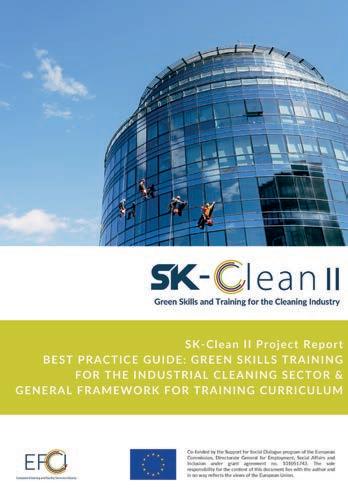
Several key trends are set to reshape the industry, impacting businesses and consumers alike. Automation, digital transformation, cost efficiency and development of training systems are some of the trends to innovate and deliver sustainable, efficient, and effective cleaning solutions
edited by SIMONE CIAPPARELLI
The professional cleaning and hygiene industry is at a pivotal moment. The landscape of the market is evolving, driven by technological advancements, shifting consumer expectations, and increasing regulatory pressures. The integration of smart technologies and automation are reshaping the industry, not only by improving operational ef ciency but also about creating safer and more exible work environments. The new report by Interclean The future of professional cleaning and hygiene: top trend for 2025 explores the trends and the associated product innovations revolutionising the global professional cleaning and hygiene industry in 2025. Let’s see some of the most signi cant macro-trends of this year.
Sustainability and environmental consciousness have become fundamental driving forces within the professional cleaning and hygiene industry. As environmental concerns escalate, businesses are increasingly pressured to reduce their carbon footprint, adopt eco-friendly cleaning solutions, and meet evolving ESG (Environmental, Social, and Governance) criteria.
Cleaning solutions made from non-toxic, biodegradable ingredients are gaining popularity, reducing the harmful impact on the environment, as high performance, advanced cleaning machines that use less energy and water are spreading. Eco-friendly cleaning products and
practices are being certi ed through various green standards, providing businesses with a reliable means to prove their sustainability claims. Moreover, IoT sensors offer a powerful tool for meeting sustainability goals by enhancing resource ef ciency and reducing environmental impact. In fact, IoT sensors can track the levels of consumables, such as soap, paper towels, and cleaning chemicals, in real-time, re lling only when necessary. Smart cleaning systems enabled by IoT can monitor key metrics like water usage, energy consumption, and cleaning cycle times. This data allows facilities to adjust cleaning schedules based on real-time occupancy, ensuring resources are used
Let’s talk about

only when needed. As the professional cleaning and hygiene industry moves toward 2025, the role of the Internet of Things (IoT) in driving sustainability goals is becoming increasingly critical. IoT technologies are revolutionising how cleaning operations are managed, enabling businesses to optimise cleaning schedules and resource use based on real-time data. While the shift towards sustainability offers substantial opportunities, businesses often face higher initial costs for sustainable products and technologies. Additionally, regulatory requirements and evolving standards present challenges
in keeping up with the pace of change. However, this trend also presents new markets and customer segments for ecoconscious products, offering a signi cant competitive advantage for early adopters. Stricter government policies are accelerating the adoption of ecofriendly cleaning products across industries, driving businesses to prioritize sustainability in their cleaning processes. These regulations not only mandate the use of safer chemicals but also push for cleaner, more ef cient operations.
As businesses increasingly focus on Environmental, Social, and Governance (ESG) considerations, there’s a growing emphasis on evaluating the full product lifecycle, from manufacturing and water use to disposal.
As sustainability continues to be a top priority, the demand for green cleaning products and services will grow, driving continued innovation. In 2025, more businesses in the cleaning industry will adopt comprehensive sustainability initiatives, aligning with environmental regulations and consumer expectations.
In 2025, cost-ef ciency remains a central focus for businesses in the professional cleaning and hygiene industry. In a sector
traditionally driven by low margins, companies are constantly searching for ways to balance rising demand with tightening budgets. As clients continue to push for lower costs, service providers are feeling the pressure to nd savings in their operations. One of the most signi cant challenges lies in the fact that labour remains the largest cost for cleaning businesses. However, new strategies focusing on sustainability and cost savings are emerging as key solutions for businesses. Multi-functional cleaning machines offer various cleaning capabilities in one unit, reducing the need for multiple pieces of equipment. The development of concentrated cleaning products continues: these products contribute to reducing transportation costs and packaging waste, offering a more cost-effective and eco-friendly solution. In 2025, cost ef ciency will continue to be a priority, with businesses investing in technologies that streamline operations, reduce resource consumption, and improve productivity. The trend will drive further product innovations in costeffective cleaning solutions.
One of the most exciting advancements in the cleaning industry is the rise of AI-powered cleaning robots: autonomous machines capable of cleaning large areas without human intervention, enhancing productivity. These robots can autonomously perform a wide range of cleaning tasks, including oor cleaning, window washing, and disinfection, all while requiring minimal human intervention. AI-powered robotics are revolutionising cleaning operations by providing around-the-clock services in
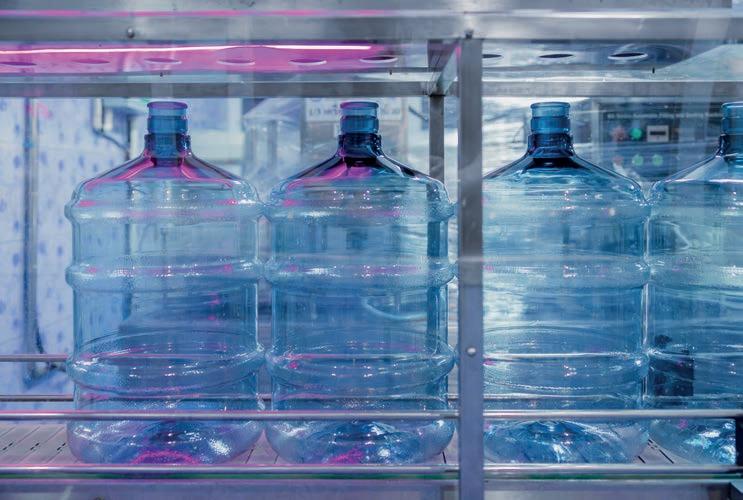
UV-C light sterilisation technology can be used in cleaning to eliminate viruses, bacteria, and germs
large-scale commercial spaces, such as healthcare facilities, airports, and of ces. AI-enhanced robots are equipped with sensors and cameras that help them navigate complex spaces, learn from their environment, and optimize their cleaning routes for greater ef ciency. The potential of these robots extends beyond just performing cleaning tasks. With real-time data reporting and predictive analytics, they can alert building managers to maintenance needs or performance issues, enabling proactive management of cleaning operations. Additionally, cloudbased platforms are increasingly being used to coordinate multiple robots within a facility, ensuring that the cleaning process is continuous and synchronised. In 2025, automation will be further integrated across the industry, with advanced robotics and AI systems becoming commonplace. This trend will increase productivity and ef ciency, allowing businesses to stay competitive in a rapidly evolving market.
Predictive maintenance and databased solutions are revolutionizing the cleaning industry by enabling businesses to better utilize their equipment and schedules. Machine learning and realtime data enable businesses to predict when maintenance is needed, reducing downtime and improving operational ef ciency.
Technological advancements, particularly in machine learning and data-driven solutions, are accelerating key macro trends across industries. These innovations are transforming how businesses approach ef ciency, accuracy, and real-time decision-making.
Unlike traditional automation, which focuses on streamlining processes, machine learning leverages data to optimize operations by continually improving decision-making and adapting in real-time.
For example, IoT sensors in cleaning systems can communicate with other building management systems, such as HVAC (Heating, Ventilation, and Air Conditioning). This integrated approach
ChatGPT is a chat bot based on artificial intelligence and machine learning, developed b pen A and speciali ed in conversation ith a human user: it has sho n remar able abilit to generate te t similar to that used b people, so much so that it passed the Turing test ith e cellent results
The Turing test is a criterion for determining hether a machine is capable of e hibiting intelligent behavior, suggested b Alan Turing in the
ensures that cleaning efforts align with air quality, humidity, and temperature conditions, providing a more holistic and ef cient way to maintain a building’s cleanliness and comfort.
AI is also transforming maintenance operations within the cleaning industry. Traditional maintenance approaches often rely on scheduled checks or reactive measures when equipment breaks down. AI-powered systems, however, use machine learning algorithms to
talk about
analyse usage patterns and predict when cleaning equipment is likely to fail. This predictive maintenance capability helps businesses reduce downtime and optimise maintenance schedules, leading to longer equipment lifespans and signi cant cost savings.
As the professional cleaning and hygiene industry continues to evolve, it is crucial to understand the distinction between digitalisation and arti cial intelligence (AI), two key drivers of innovation. Digitalisation refers to the integration of technology into everyday cleaning operations through tools such as software systems, smart dispensers, and IoTenabled devices. These systems provide real-time data, automate processes, and streamline operations. On the other hand, AI goes a step further by applying machine learning, predictive analytics, and advanced algorithms to analyse data and make autonomous decisions. Unlike digitalisation, which is primarily about improving operational ef ciency, AI can predict future needs, optimise work ows, and even respond to real-time conditions in ways that go beyond human programming.
In 2025, predictive maintenance and data-driven solutions will be fully integrated into cleaning operations, making businesses more ef cient and reducing costs. These technologies will become standard practice, driving further automation and optimisation.
Enhanced training and education programs are essential to develop skilled workers capable of utilising new technologies and adapting to changing industry demands. The development of training softwares and simulations can help employees learn new skills and safety protocols. As the cleaning industry integrates more advanced technologies such as
SIMULATED REALITY IN PROFESSIONAL CLEANING TRAINING
It combines the real world and computer-generated 3D content which can span multiple sensory modalities
Physical and virtual objects may coexist and interact in real time
AI and robotics, it becomes essential to ensure that cleaning staff receive continuous training to keep up with these innovations. AI-driven platforms and tools like ChatGPT are streamlining training processes by providing real-time assistance to cleaning staff, delivering tailored content, and simulating real-life scenarios for practical training. AI can help make complex cleaning protocols more accessible by translating them into simpli ed steps or offering multi-lingual support for a diverse workforce. Currently, the most promising application of AR and VR in the cleaning sector is in staff training. Training and development are crucial areas of investment for businesses in the sector and research into VR has been positive about its results. VR enables the creation of realistic, immersive training environments that simulate realworld cleaning challenges. Employees can practice complex tasks, such as using hazardous cleaning materials or operating heavy machinery, without the safety risks of on-site training. Investing in workforce development offers long-term bene ts in terms of productivity, service quality, and employee retention, particularly in a competitive labour market like professional cleaning.
In 2025, the cleaning industry will place even more emphasis on workforce development, integrating continuous learning and development programs to meet evolving industry demands.
Creation of realistic, immersive training environments that simulate realworld cleaning challenges
Because of the COVID-19 pandemic, cleaning and disinfection are now recognised as critical elements of public health, driving demand for professional cleaning services across sectors such as healthcare, hospitality, and food services. Among product innovations, highperformance disinfectants are formulated to meet stringent hygiene standards and kill a broader spectrum of pathogens. UV-C light sterilisation technology can be used in cleaning to eliminate viruses, bacteria, and germs without the need for chemicals. Air puri cation systems are devices that improve indoor air quality and reduce airborne pathogens in public spaces.
The heightened focus on hygiene has elevated the cleaning industry’s pro le, transforming it into a vital service for protecting public health. Businesses that can offer effective hygiene solutions will gain a competitive advantage.
The demand for high-quality hygiene solutions will continue to rise as public health concerns remain top of mind.
In 2025, businesses will increasingly incorporate advanced technologies to meet the growing need for enhanced sanitation.
SOURCE
Interclean, The future of professional cleaning and hygiene: top 10 trends for 2025






SIMONE CIAPPARELLI
Robotics is becoming more and more prevalent in a wide number of industries, most notably manufacturing and logistics. The development of robot and cobot models has also begun in the cleaning sector, but it will take some time for these technologies to become a permanent part of cleaning operations








The adoption of robotics technology is growing worldwide in the professional cleaning sector, but its spread is still at an embryonic level. What are the bene ts and advantages that robotisation can bring to the industry, what changes will occur in the approach to work, and what critical issues need to be addressed for robotics to spread evenly and become a permanent part of operations in the professional cleaning sector? We talked about this during the second edition of the CleaningPiù conference with Stefano Grosso, a member of the AFIDAMP autonomous machines focus team, who spoke in the ‘Cleaning between present and future’ session. Moderator of the session was the event’s technical director, Maurizio Pedrini.
«In sectors such as manufacturing and logistics, automation is now part of the norm - Grosso explains - Even the professional cleaning sector is growing, especially in the adoption of cobots, which differ from robots in their ability to work together with the operator, taking over those repetitive tasks that are automatable by allowing the operator to perform non-automatable tasks that require human intelligence. This allows the worker to better manage his time and increase productivity. In fact, it is estimated that less than 10 per cent of all processes are fully automatable, and about 60 per cent of all processes contain some tasks that can be fully automated».
The main objective of professional cleaning robots is therefore to automate routine and repetitive tasks, thus freeing the human worker from these tasks and making him/her available to perform those higher-value assignments that require reasoning and planning.
«For example - Grosso continues - these activities may be represented, for a service company, by periodic non-repetitive core activities, or sanitising activities that require greater precision, or to be carried out on particularly complex surfaces. For a company, a logistics company or a hotel, higher-value activities may instead be represented by core activities such as production, or taking care of guests».
Through the use of a graph, Grosso explained what stage of development we are at in terms of the level of deployment of these technologies worldwide: «Looking at gure 1, the red curve relates time and investment in research and development to innovation performance, which goes hand in hand with technology adoption. Initially, investment is high, but the curve is at because high performance and volume are not achieved. At a certain point, the curve starts to rise, until, once mature, it attens out again».
«The blue curve, on the other hand, represents the phenomenon from the point of view of the end consumer, the technology user.
SPREADING OF A NEW TECHNOLOGY OVER TIME

In the rst part of the curve are represented the innovators, those who like to try out newly released technological innovations. Next are represented the early adopters, those who implement the use of new technology in their business while also accepting the presence of possible aws due to the recent development. The point where the curves meet and the next dotted line represents the change of pace, when the technology starts to be used by the majority of people. At this point, there is growth in volume and performance, and the new technology is no longer unknown, but a tool that has been widely adopted by users».
The implementation of robotic technology makes it possible to clean better and faster, taking fewer hours to perform cleaning tasks. Other bene ts of using autonomous cleaning are as follows:
• Improving working conditions
• Increased productivity and ef ciency
• Improved corporate image: today, even employees themselves can be considered a customer category. They will be more likely to choose to work for a company that employs robotics solutions to make work faster and more ef cient and less tiring.
• Customer and employee loyalty.
There are technical aspects that are critical to take into account in the development of robotics technology:
• Safety of environments and people: the large manufacturers comply with European standards, of which safety is one of the cornerstones. There is therefore great con dence that this

The spread of robotics in the professional cleaning sector is still at an early stage - explains Grosso - There is no real dominant model, and there are a very large number of manufacturers on the market, especially from the East. The number of units sold worldwide is small compared to traditional machines, and above all the number of customers is small, present in just a few countries (mainly Eastern countries, the USA and Northern Europe), constituting a very heterogeneous picture. This is not to say that functional solutions do not exist: several manufacturers have succeeded in developing interesting, effective solutions capable of achieving good levels of productivit and e cienc , but we are still at the beginning of the spread of this type of technology and, as explained earlier, it takes time for it to catch on.
There is still no defined form of the professional cleaning robot - Grosso continues - there is still some variability, especially as regards the
Stefano Grosso, focus team macchine autonome Afidamp
technological part. However, we are beginning to see some signs of convergence; some types of sensors, such as Lidar, are now used by most manufacturers. The basic technology for navigation is almost exclusively AMR (Autonomous Mobile Robots), which means that the machine is able to move around in its environment without the need for operator supervision and the provision of fi ed paths or tracks. From the point of view of interaction, manufacturers are focusing on simplicity. For cleaning operations, simple programming is preferred to more complex software with a large number of functions.
The diffusion of robotics in the cleaning market will not overturn the sector, it ill not redefine the paradigm of professional cleaning, since the basic concept of the machine does not change, but it has certainly increased and will increase its complexity - Stefano Grosso continues - Robotics in cleaning therefore does not represent a radical innovation, but rather an incremental one. Therefore, we can talk about a definite evolution, but not a real revolution.
critical issue will be addressed in the right way.
• Skills: in order to make the most of robots, new skills must be introduced. The operator, from a gure who, for example, drives a scrubber becomes a gure who handles a high-tech asset, thus making it necessary to update his knowledge and skills.
• Data security and privacy: issues such as where data is collected, compliance, GDPR and in general all aspects concerning privacy are very important and must be taken into account when developing machines.
• Evolving regulations: several new regulations, such as the AI Act, are coming into force, also outside the cleaning sector, which will change the regulatory landscape in Europe and beyond.
«The robot should not be seen as a solution to cut costs - Grosso continues - but as a tool to clean more often and clean better. Nowadays we tend to clean when it is dirty, or worse, we follow cleaning calendars linked to speci cations or schedules that theoretically should be balanced against the frequency with which the environment is cleaned. Automation allows us to move away from the ‘clean when dirty’ approach and adopt a more correct one of continuous cleaning that keeps environments consistently healthy».
«Another aspect to consider is the willingness to rethink processes between client, company and supplier. In countries where robotic technology is already relatively widespread, there has been a great commitment on the part of adopters to rethink processes and room layouts in order to take advantage of automation».
«Another important goal is to engage people by making them aware of the bene ts of adopting robotics. Automation frightens many people, who see it as a means to cut jobs. It is therefore necessary to make it clear that the objective is certainly not to lay off staff, but to lighten workloads by relieving operators of
Let’s talk about

SOME
Collaborative robots are designed to interact and collaborate with humans. This means they work together with human operators to ease and speed up the cleaning process. With the more advanced navigation features and built-in safety systems, collaborative robots are
These robotic devices are designed to clean windows automatically with minimal human intervention. These devices use advanced technology, including sensors, suction power, and intelligent path planning systems. These systems use advanced algorithms to map out the window’s surface and determine the most e cient cleaning route. This ensures that the cleaner doesn’t miss any spots, unlike manual cleaning, where human error often results in streaks or missed areas. These robotic cleaners are also capable of detecting obstacles, such as window frames, and adjusting their cleaning path accordingly. Some even offer multiple cleaning modes, including edge detection,
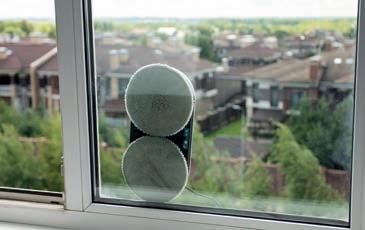
which ensures that the robot doesn’t leave gaps at the edges of windows. Many smart window cleaners come with built-in safety features to ensure they stay securely attached to the window during the cleaning process. These include anti-fall systems, such as safety ropes or backup suction power, that prevent the robot from slipping off the window.
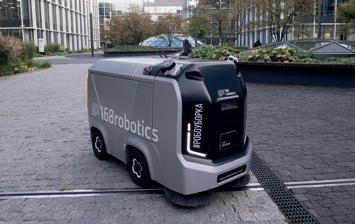
The move towards autonomous street sweepers has the potential to contribute to an even more environmentally friendly and e cient cleaning of private ground and public spaces. The low noise pollution of electric sweepers allows them to be
used both during the day and at night. The e cient algorithms governing these machines allow the autonomous sweepers to follow all objects in sight at the same time. These smart sweepers are equipped with rear, side and front multi-sensors that provide a 360° view of the surroundings. Whether the sweeper faces a human being, an animal or any moving or static object, the driverless sweeper detects and recognises the danger and acts accordingly. When needed, usually an operations team can provide the driverless vehicles with human guidance and intelligence from a remote command centre.
able to interact safely with people in the workplace. This is because they have a complete perception of the environment and are able to predict human intention. Thanks to their detailed mapping technology, these machines create a comprehensive representation of the environment, identifying obstacles and optimizing cleaning paths, allowing them to operate e cientl even in comple and dynamic spaces. When they encounter une pected obstacles or people in their cleaning path, cobots adjust their route in real time. Thanks to their great water capacit , e tended autonom and robust and durable construction, oor cleaning cobots are designed to tackle the most demanding challenges, such as cleaning warehouses or industrial facilities.
repetitive tasks and directing them towards activities that require human intelligence. The last critical issue to be addressed is the still high price of software and hardware, which is currently an obstacle to deployment».
«The adoption of robotics would also lead to a reduction in the environmental impact - Grosso explains - The oor-cleaning robots follow pre-set programmes, avoiding double passes, and therefore do not unnecessarily go over a portion of the surface that has already been cleaned. Moreover, the robots continuously collect data that allows them to reduce costs and consumption by optimising routes, cleaning frequencies and the amount of water and detergents used. Making good use of the data collected allows us to build a solid base for the development of preventive maintenance, increasing the ef ciency and lifetime of the machines».
MAURIZIO PEDRINI journalist and technical director of Dimensione Pulito
Given the still high production costs, the use of less expensive and renewable raw materials, such as agricultural residues or agro-industrial waste, which are less toxic, but also more biodegradable and sustainable, is being considered to create these products
In the professional detergent market, there is a steadily growing demand for bio-detergents - bio-surfactants, with a view to sustainability: a sensitivity that corresponds to multiple needs not only of an ethical, social and economic nature, but also to the precise and increasingly widespread desire not to pollute the environment. Today, eco-compatible solutions are also nding interesting applications from cleaning companies, which intend to propose new strategies to their customers for the hygienisation and sanitisation of environments, especially
in the context of the most delicate community places, where maximum attention to hygiene and safety is required, such as in Residential Care Homes and nursing homes in general. Certainly, the scenarios for the use of bio-detergents in the years to come appear to be very interesting and potentially ever broader. In fact, this vast category of green products has been attracting the attention of our sector for at least twenty years, as an extraordinary ally to best clean any type of surface, reaching even the deepest porosity, sometimes making up
for the objective limitations of traditional detergents, which in some cases prove ineffective.
These are gram-positive, facultative aerobic and anaerobic micro-organisms, which produce speci c lytic enzymes in large quantities, capable of acting on a wide variety of organic substrates, such as cellulose, urea, carbohydrates, oils, fats, etc. Compared to conventional ones, these ecological detergents contain nonpetroleum-derived surfactants, and both
Let’s talk about
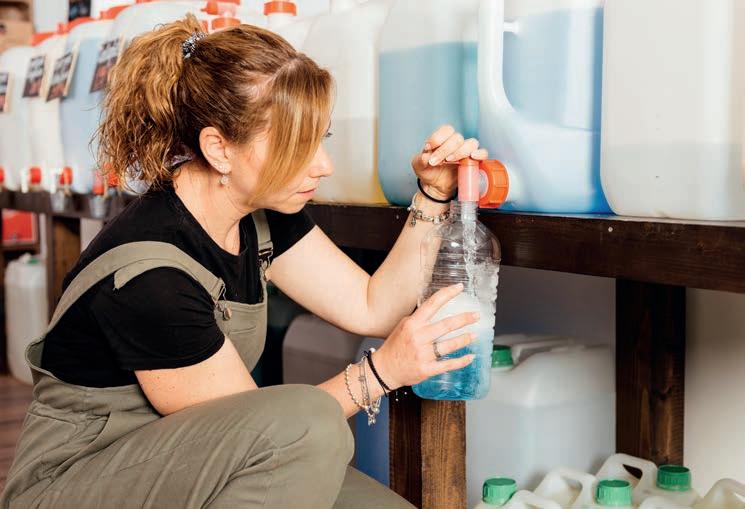
The substrates used for the production of bio-surfactants contain elements such as glucose, sucrose and glycerol from biomass. Waste and oily residues of plant origin are the most commonly used substrates for fermentation through the synthesis of enzymes or microorganisms

optical brighteners and preservatives of natural origin are absent. Currently, the surfactants used as emulsifying agents and detergents are mostly of fossil, nonrenewable origin. They are one of the most important classes of industrial chemicals, with a worldwide production of millions and millions of tonnes. Bio-detergents or bio-surfactants best interpret the concept of circularity, as they can be produced from renewable organic materials. A bio-detergent, in fact, can be made from the fermentation of food waste, exploiting the growth of yeasts and bacteria. The waste can then be recovered for a new
application in the food or pharmaceutical industry. Fermentation is the key process in the production of bio-detergents. This is carried out by bacteria, yeasts and fungi that can use organic waste as a substrate to produce bio-detergent molecules. Bacteria that exploit this type of substrate include: Starmerella bombicola, Acinetobacter, Pseudomonas, Halomonas, Bacillus, Myroides, Corynebacterium and Alteromonas.
We are facing, as we said at the beginning, a positive trend in the bio-based market,
which - for years now - has been marching towards double-digit increases in production and sales. A brake on its expansion, in addition to the dif cult economic situation and the heavy geopolitical crisis we are experiencing, is undoubtedly the production costs, which are decidedly high (20-30 E/Kg, in Europe) compared to traditional detergents. The advantages of using these ‘new protagonists’ of professional detergents are many: bio-derived surfactants have a high capacity to reduce surface tension and are stable up to 80 °C. They also have a pH value between 8 and 12, so they can also be used as laundry detergents. Moreover, they are nonirritating, have low toxicity and boast moisturising properties. This is why they can be used extensively in many elds of application, even in the careful sanitisation of oors and wall surfaces: just think of tile joints or mould receptacles. Unfortunately, we all - as we well knowlive in environments colonised by various and multiple micro-organisms such as: bacterial cells and, indeed, moulds capable of spontaneously aggregating, producing a sort of bio lm, i.e. a complex matrix that adheres and spreads on surfaces, to defend them from the action of chemical agents and hostile environments, sometimes generating forms of resistance that are dangerous to health. Bio lm can also contain small percentages of pathogenic bacteria and molds, which can subsequently lead to infections or allergies. In these cases, the bio-detergent is able to express all its ef cacy at its best: thanks to the micro-organisms it is composed of, it is able to penetrate the bio lm and counteract the presence and proliferation of pathogens, implementing a competitive exclusion mechanism. Bio-
BIO-SURFACTANTS/BIO-DETERGENTS
An environmentally friendly and renewable alternative to conventional surfactants can be offered by biosurfactants. Bio-detergents or bio-surfactants are interesting from a circular perspective as they can be produced from renewable organic materials. A bio-detergent can, in fact, be produced from the fermentation of food waste, exploiting the growth of yeasts and bacteria. The waste can then be recovered for a new application in the food or pharmaceutical industry.
Bio-surfactants, which have entered the market as ingredients for the formulation of detergents and cosmetics, are composed of a greased acid and a disaccharide (sugar). The most studied and commercially most advanced are the (non-GMO) rhamnolipids and sophorolipids.
Fermentation is the key process in the production of bio-detergents. In this process, bacteria, yeasts and fungi exploit organic waste as a substrate to produce bio-detergent molecules. Bacteria that exploit these types of substrates include: Starmerella bombicola, Acinetobacter,

Arthrobacter, Pseudomonas, Halomonas, Bacillus, Myroides, Corynebacterium and Alteromonas (Dolman et al., 2017, Wang et al., 2020a).
The substrates used for the production of bio-surfactants contain elements such as glucose, sucrose and glycerol from biomass. Waste and oily residues of plant origin are the most commonly used substrates for fermentation and the production of bio-surfactants, through the synthesis of enzymes or microorganisms. Enzymatic fermentation, compared to microbial fermentation, involves a higher production cost but a lower recovery cost because the end product achieves a higher degree of purity. Depending on the degree of purity of the bio surfactant, the fields of application can be: environmental remediation or the food, cosmetics and pharmaceutical sectors, for those with a high degree of purity. Thus, residues from the food processing industry such as rice husk waste, starch aste, mill e uents can be used for the production of affordable and competitive bio-surfactants.
The bio-based surfactant market has a growth rate of more than 6% and is expected to reach USD 6.5 billion by 2027 (‘Global biosurfactants market report with short-term impact of COVID-19’, 2021). Thus, one can speak of a growing market. The current production costs are, however, still rather high (20-30 €/kg, in Europe) compared to conventional detergents (1-6€/kg) (Dierickx et al., 2021).
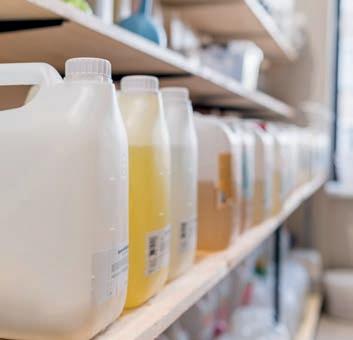
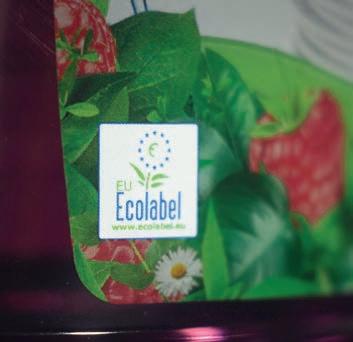
detergents, therefore, create an effective and gentle barrier on any type of surface: their work does not end with rinsing, but the degradative action developed continues as long as dirt persists. They manage to stabilise hygiene levels - some 90 per cent more than conventional detergents and disinfectants, making them optimal for cleaning in healthcare and hospital facilities. Looking to the future, it must be said that the replacement of conventional surfactants with renewable bio-surfactants in professional detergents is also a great challenge for the professional cleaning sector, as it is an integral, if not fundamental part of the transition process towards a circular economy. To overcome the not insigni cant problem of the still very expensive production of this type of product, the use of cheaper, renewable sources, such as agricultural residues or agro-industrial waste, which entail less toxicity, but also greater overall biodegradability and sustainability, is being increasingly considered.
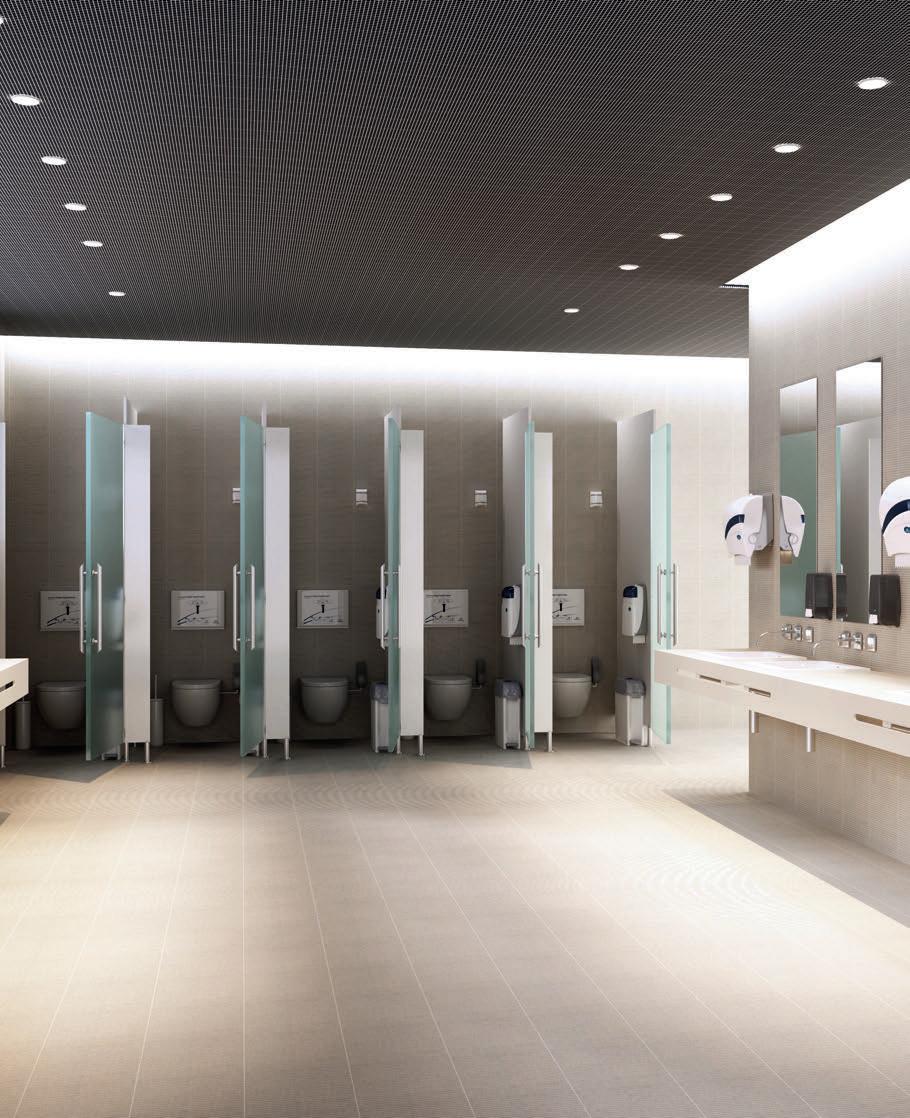
Soluzioni d’igiene e di protezione professionale
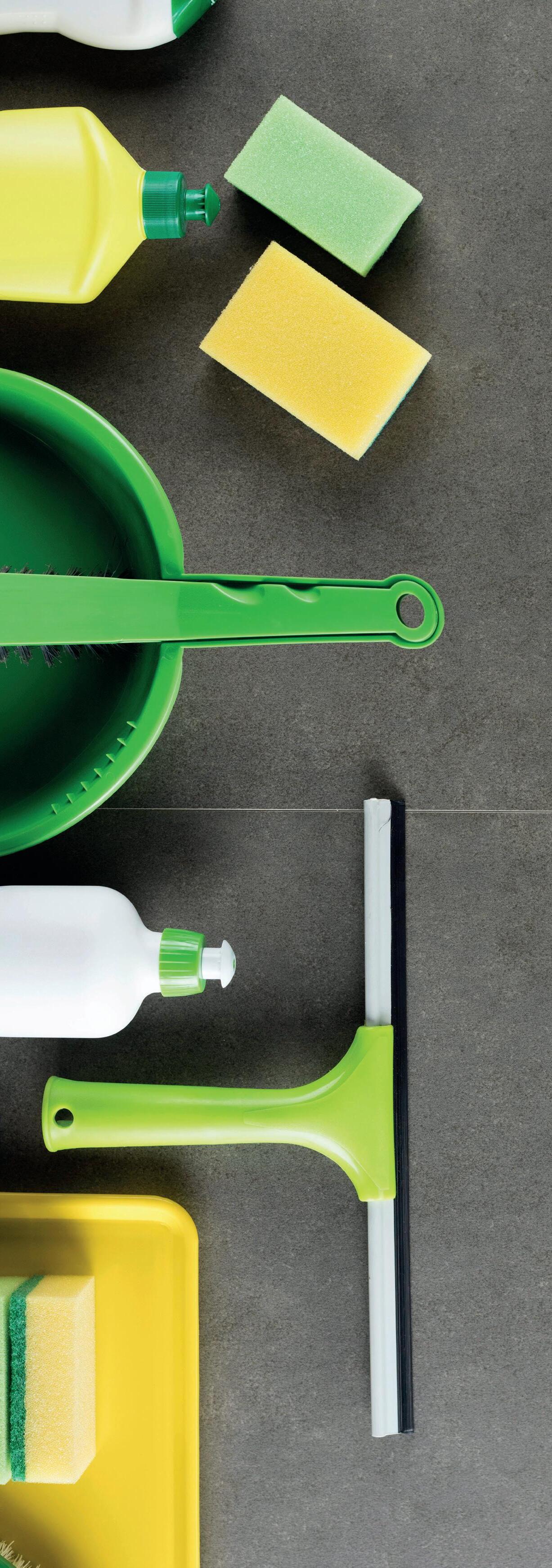
MAURIZIO PEDRINI
The sustainability of a cleaning process is determined by the impacts that occur at all points in the supply chain and life cycle, from the manufacturing of cleaning products and equipment to their use and disposal

A large part of the cleaning sector’s environmental impact occurs or is determined by the phase following product manufacture. Therefore, the most important contribution that cleaning manufacturers can make to improving the sustainability of the sector is to design reliable products, while at the same time helping to reduce the overall environmental impact throughout the cleaning cycle. This can be done in several ways: one is the production of active formulations at low temperatures, which enable effective cleaning with lower energy consumption.
The development of concentrated products and their dosing systems for dilution saves on packaging and reduces the environmental impact of transport. It is also important to optimise performance to ensure cleanliness on rst use. Poor performance leads to repeated washing operations or causes the user to overdose the product, which proportionally multiplies the impact of cleaning.
In addition to the economic and social bene ts of improved productivity and reduced physical labour, mechanisation can help minimise the consumption of cleaning products and, in some cases, enable the use of lower temperatures. In part, this is because the effectiveness of cleaning depends on a combination of mechanical, chemical action, temperature and time. Mechanical action helps to remove dirt and reduces the contribution of other factors. Mechanisation also offers the opportunity of highly controlled or automated dosing, which can directly optimise the use of cleaning products. In terms of environmental impact, cleaning machines consume two important resources -
energy and water - as well as detergents and other consumables such as brushes and discs. Minimising these impacts depends not only on good initial design, but also on proper and regular maintenance during their life cycle and the use of good dosage control of the detergents used. Precise dosing not only prevents waste, but also avoids under-dosing that can lead to inadequate cleaning and, consequently, to re-dosing. Another aspect capable of producing environmental impact is noise. This issue also has a social impact, as does the vibration that often accompanies noise, on operators operating the machines. When choosing oor cleaning equipment, it is important not only to consider the power rating, but to take into account the amount of cleaning carried out per unit of time. A 1000 W unit, for example, consumes more energy than an 800 W unit, but if it cleans the same amount of surface area in half the time, the amount of energy used to do the job will be much less. With regard to water consumption, several machines supply water in varying amounts to the cleaning heads depending on speed, supplying less at low speed, or at certain points on the surface to be cleaned (e.g. when turning corners). This not only optimises the use of water and cleaning products, but also avoids leaving wet spots that delay the drying of the oor and represent a possible risk of slipping.
When comparing similar items, the nature of the life cycle impacts will be similar, but potentially different in magnitude. But when the formats are very differentfor example, a paper towel or a reusable cloth - the impacts can be very different. Disposable paper towels tend to show higher resource consumption and solid waste generation, while reusable cloths can have signi cant impacts when soiled cloths are cleaned for reuse, consuming detergents and energy, especially if hot water is used. The decision often depends on an assessment of the relative importance of these impacts, e.g. how much increased energy consumption is equivalent to how much extra solid waste production. It is also very important to consider the parameters of the cleaning operations in which the instruments will be used. For example, in sanitary applications where it is essential to avoid cross-contamination, single-use products may be clearly preferable.

A central theme in improving the sustainability of cleaning products is trying to clean more using less product. Using a highly functional ingredient in place of a much less eight e cient one can also be a way to compact products and achieve considerable savings in both packaging and transport. Enzymes are an example of this: highly effective even at minute quantities, they can replace thousands of times the weight of some non-enzymatic ingredients. Enzymes also have the advantage of working well at low temperatures, thus saving energy and reducing CO2 emissions. Bleach activators, which in small quantities allow oxygen-based bleaches to work well at low temperatures, are other examples of innovative ingredients that can greatly improve the overall sustainability of the washing process.
The production of items used in professional cleaning processes, be it cleaning products, machinery or equipment, has a number of potential environmental impacts and it is the manufacturer’s responsibility to ensure that these are managed responsibly. When working to improve the
sustainability of cleaning processes throughout their life cycle, it is therefore important to choose manufacturers that not only provide good products, but also responsibly manage the environmental and health impacts of their production and distribution operations. Companies

THE USER HAS A CRUCIAL ROLE IN MINIMIZING ENVIRONMENTAL IMPACT, BUT IMPROVING THE SUSTAINABILITY OF CLEANING IS A TEAM GAME IN WHICH ALSO THE MANUFACTURER AND THE SUPPLIER PLAY
use various standards and certi cation systems, such as ISO14001 or EMAS, to manage their environmental impact.
In order to ensure sustainability in all its aspects - social, environmental and economic - it is essential that staff are properly trained. The more complex the process and the more critical the cleaning operation, the more important good training becomes.
For more complex cleaning operations, cleaning product manufacturers sometimes provide a complete package that includes the supply and maintenance
of all products and equipment, tailor-made cleaning programmes and maintenance schedules, staff training and process supervision with full quality assurance.
Improving sustainability means nding ways of making an overall improvement across this whole life cycle. For example, devising a cleaning product that took less energy to manufacture would make no sense if it needed twice as much to transport and use. Contrary to what people tend to expect, most environmental impacts of cleaning processes arise or are determined ultimately when the product is used. This is where most energy is used and where product use is controlled. The user thus has a crucial role in minimizing environmental impact, but improving the sustainability of cleaning is ultimately a team game in which everyone in the design, supply and use chain has a key part to play.
The generation of waste and emissions can have an important impact at various points in the life cycle. Waste that goes to land ll can have a major environmental impact, and efforts are made to reduce or eliminate this by minimizing waste generation and by recycling. The most signi cant emission is generally carbon dioxide (CO2) to air which impacts on
climate change, though most CO2 is a by-product of energy generation and is automatically reduced when energy use is minimized.
When manufacture and use operations are properly managed, and products and processes are correctly designed, there should be no signi cant impact from emissions of materials to water from the manufacturing plant, or of nished products to drain. Even though most substances are hazardous (toxic to aquatic life for example), there will be no harmful effect provided the quantities emitted do not lead to unsafe levels in the water. This is routinely assured by proper environmental management in production facilities, good product and process design, and by correct use and disposal according to instructions by the user. Although most cleaning processes give rise to the same list of impacts, the importance of each varies widely from process to process.
The dominant impact in mechanical warewashing for example is energy use during the cleaning process to heat water and run machinery. Manual building cleaning, in contrast, is less energy-intensive and raw materials for products and packaging can have major impacts, though the latter can be minimized by using concentrated products and appropriate dosing equipment.

UK Cleaning Products Industry Association (UKCPI) is the leading association representing British manufacturers of detergents, bar soaps, hand and machine dishwashing detergents, disinfectants, indoor air care products, polishes and kitchen and bathroom cleaners.
Let’s talk about
-Monitoring Area
-Alert Service
-Optional home automation
-Cloud Based



-Customized report
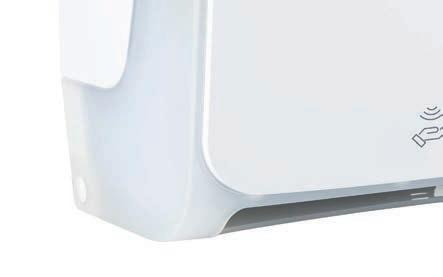
















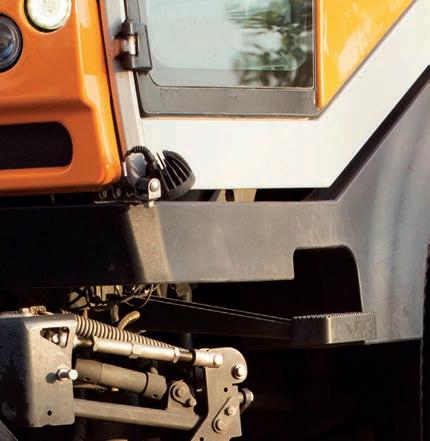


The market has long offered environmentally friendly street sweeping machines, thanks to filtration systems capable of retaining up to 99% of Pm10



Street sweepers, as is well known, are used today in a wide range of cleaning operations in city centres and car parks, in order to clean particularly large areas without damaging them in any way. They are particularly effective at picking up waste of all kinds, whether light, such as paper, or heavy, such as bottles. This category of sweepers is also characterised by a large capacity of their waste container. This feature means that there is no need to temporarily accumulate waste somewhere and then transport it elsewhere later.




The production sector of this important niche of professional cleaning sees innovation particularly focused on environmental sustainability and green and a whole series of solutions increasingly capable of meeting the need to save water and energy resources. The offer of new products, however, is being called upon to face multiple challenges, including that of the reduced economic resources available to customers, at the same time as new requirements and numerous critical issues related to the waste collection service. In addition to the need to differentiate the waste collected, there are also those related to the containment of noise and environmental pollution, without forgetting the new, increasingly stringent, regulations. Manufacturers, for example, are committed - through research and development - to innovating street sweepers with a series of technologies that allow the recovery of two or three different types of waste, in a single collection pass, with the aim of limiting the number of routes in urban centres, promoting a collection style that is economical in terms of time and cost, thanks to a series of devices to make the work easier for operators. But the real great challenge is to build machines that are able, at the same time, to guarantee, together with the reduction of environmental impact, under the banner of maximum sustainability, also the maintenance of high performance standards and effective economic savings.
The greatest innovative effort is concentrated on the mechanical suction system, with a view to making each of these machines a true eco-friendly machine, combining high sweeping performance with minimal use of water, high-ef ciency ltering systems, very low-emission engines, and the use of increasingly biocompatible components. For years now, the market has been offering road sweeping machines with low environmental impact, thanks to engine propulsion and ltration systems capable of retaining up to 99% of PM10.
The most hopeful fact for the future is that manufacturers are investing more and more resources on the innovation front, which is now projected towards the 4.0 dimension and the increasingly pregnant use of the opportunities presented by arti cial intelligence.
Latest-generation hydraulic systems, designed to keep consumption and costs as low as possible, increasingly advanced and competitive machines that - in addition to improving quality and performance - cost progressively less, have fewer components and codes, and are able to optimise experience and technological research. Another ‘strand’ of great interest is represented by the so-called ‘customisation’ of the product, with a whole series of adaptations of road sweepers speci cally designed to operate in contexts where water consumption must be very limited, if not almost zero, as in the case of Arab countries. We refer above all to those systems that combine the power of mechanical action, to collect the most consistent residues, and the effectiveness of suction for the nest dust, guaranteeing excellent results even without using water, saving up to 100,000 litres per year. The street sweeper, already today, but even more so in the years to come, must be designed to be able to operate at its best in the most dif cult conditions, making an essential contribution to tackling the problem of ne dust pollution. Some machines currently on the market are proving to be really effective in reducing these values, completely ltering all the air sucked in, before releasing it back into the environment.
All this with extremely limited maintenance and operating costs, thanks to an increasingly intelligent and less wear-intensive use of brushes and aps. An aspect of great importance is that of power supply: the electric one, undoubtedly at the cutting edge, is particularly appreciated, even if not yet widespread, but with considerable margins for expansion, despite undoubted criticalities. The fact is that the market, both private and public, is increasingly
The main urban hygiene activities can be divided into three processes: separate collection, collection of mixed waste, and cleaning of urban areas, such as sweeping. Collection and sweeping activities can be performed either manually or by mechanical means.
These activities play a role in the public interest, and must be carried out without endangering human health and the environment, following criteria of effectiveness, efficiency, cost-effectiveness and transparency. When dealing with a complex work environment such as the one that characterises urban sanitation, a thorough assessment of work risks is therefore necessary. This is fundamental in order to prepare adequate prevention and protection measures, aimed at improving working conditions while avoiding as much as possible the occurrence of accidents and injuries to operators. Waste collection consists of emptying containers of different sizes, such as bins, trestles, drums. Timing and frequency of this activity vary depending on needs, vehicular traffic and the level of urbanisation, and the operators in charge may perform manual and/or mechanised collection. The operators may also carry out ground assistance to the side-loading mechanised collection service. The operator ensures, in any case, the complete cleanliness of the sites, also collecting the waste found on the ground and placing it inside the containers for mechanised collection or, if this is not possible, in the collection vehicle. The operations are completed by the handling and repositioning of the containers. Where the placement of bins is not permitted or not planned, separate and undifferentiated waste collections can also be carried out by means of small and medium-sized vehicles.
These allow ‘door-to-door’ collection of waste deposited by users along the streets of historic town centres or in private communal spaces, where provided.
Where the placement of bins is not permitted or not foreseen, separate and undifferentiated waste collections can also be carried out by means of small and medium-sized vehicles.
These allow ‘door-to-door’ collection of waste deposited by users along the streets of historic town centres or in private communal spaces, where provided.
Manual and mechanised sweeping of public areas is performed with different vehicles depending on the type of activity, and the location where it takes place, and also involves the use of equipment for manual cleaning of green areas and streets. The cleaning of urban surfaces is carried out with mechanical equipment such as wheeled high pressure washers, used for sanitising

and removing encrustations and dirt residues from pavement and wall surfaces; blowers are used as an aid to mechanised sweeping, while brush cutters are used for weeding. Mechanised road washing is an activity that supports and complements mechanised sweeping and consists of watering the roadway and pavements prior to the sweeper’s passage, in order to reduce dust, remove waste and convey it within the sweeper’s range of action.
It is generally carried out with an operating machine (street sweeper) equipped with fixed and mobile water pressure devices. The fixed devices consist of nozzles, mounted on a bar at the front of the vehicle, which dispense water from the front and the sides; the mobile device, consisting of a long hose with a lance, is operated by an operator on the ground. The lance can be mounted on a mobile boom with or without servo assistance. The water supply system is fed by a tank with a capacity of between 2 and 6 m.
Street cleaning is part of urban hygiene services and requires the use of specific, efficient and reliable equipment, vehicles and machines.
A street cleaning programme, managed by competent companies with certified activity, makes use of cleaning machines, vehicles and products capable of guaranteeing an efficient street cleaning service that pays attention to the environmental structure and its intended use.
The broadly understood street cleaning service generally includes street washing, sanitisation of bins, and the use of machines such as: street sweepers, beach cleaners, salt and snow spreaders, and industrial brooms.
demanding powerful and highly exible sweeping and cleaning vehicles, capable of interacting with any outdoor urban environment: streets, squares, car parks, railway stations, subways, areas outside supermarkets and warehouses, etc. Compact, robust, powerful machinesregardless of size - designed for optimum sweeping performance.
The commitment of manufacturers is nding increasingly interesting and effective solutions, both in the manon-board and walk-behind niches, to solve the problems of noise, vibrations, electromagnetic and acoustic compatibility, aiming at an increasingly ergonomically adequate, safe and easy use of the machine by the operator. In this direction, the dashboards of man-on-board sweepers appear to be equipped with touch screen displays from which operators can best con gure the machines according to the functions to be performed, while remote control via app and geolocation allows constant monitoring of consumption, functionality and operation on the sites. This includes the experimentation of fully automated electric robot sweepers, with various types of motorisation and brush systems, capable of collecting a wide range of waste, from water bottles to cigarette butts. Operating 24 hours a day, except for normal maintenance operations, they guarantee a potentially in nite operational autonomy, being equipped with battery self-recharging. The continuous connection to the Cloud allows the machine to be programmed and controlled remotely via app, with noti cations on the phone to monitor the operation of the robot, the progress of cleaning operations and any anomalies. All in all, we can say that the world of street sweepers is in great ferment and looks forward to all-round innovation, aiming for ever more excellent results in terms of cleanliness and hygiene, with maximum respect for the environment.
Let’s talk about

















































































































































































































































































IS ALWAYS A RED ONE JUST FOR YOU. With two full ranges of sweepers and scrubbers for industrial cleaning and a range of more than 40 models in constant development, RCM has the exact solution you are looking for. Sturdy and efficient, the machines make easy and fast work of your cleaning.



The assessment of a company’s Environmental, Social and Governance impact performance represents an important added value in terms of enhancing positioning and performance






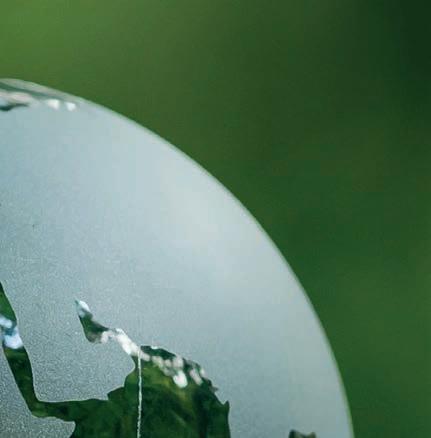






CRISTINA CARDINALI

To understand the importance and value of an ESG certi cation, it is necessary to place it within the broader scenario of economic dynamics. Today, companies must take into account the multiple impacts that their activities have on the planet and society.
The adherence of companies to ethical principles for the protection of the environment and the society in which they operate is not just a matter of good intentions, but increasingly has an impact on their ability to attract investment and play a role in their market.


Companies that want to remain in the market in the long term must make their contribution towards a sustainable economy. Even today, when we talk about sustainability we still think too much only about the environment and offsetting CO2 emissions, but this is an extremely limited and short-sighted approach.
The concept of socially responsible investing dates back to the 1960s, when financial institutions began using social and environmental criteria to identify more responsibility when selecting companies to invest with.
The most comprehensive definition of ESG (Environmental, Social, and Corporate Governance) was coined in 2005. In 2006, the United Nations launched the PRI, Principles for Responsible Investment, with the aim of fostering the spread of sustainable and responsible investment among institutional investors, who are required to subscribe to the principles and comply with their application.

A company that decides to follow ESG principles is committed to minimising its environmental impact, respecting and promoting social rights and operating according to criteria of transparency, accountability and good governance. ESG certi cation is a tool for companies to concretely demonstrate this commitment to their stakeholders: investors, customers, employees and local communities. It certi es the company’s adherence to ESG principles, based on speci c metrics and internationally recognised standards.
Obtaining ESG certi cation requires a structured process that begins with a detailed analysis of the company’s current environmental, social and governance
practices. This analysis allows the company to identify strengths and areas for improvement, de ning a targeted action plan.
The next steps include the implementation of the actions in the plan, continuous monitoring of the results and veri cation by an independent third party. Only through an external audit process a company can obtain a valid and internationally recognised ESG certi cation. Finally, it should be remembered this certi cation is not a de nitive goal, but rather an ongoing
This means incorporating ESG issues into the analysis at different stages and company activities: investment processes; own company policies and practices; seeking transparency on these factors in counterparties; promoting social responsibility in the industry; cooperating on this front and documenting activities and progress.

In the same years, the focus on corporate governance became a key factor in limiting the economic and reputational risks that emerged during and after the financial crises and scandals we have witnessed since the beginning of the New Millennium. Investor engagement and scrutiny of companies is changing the modus operandi of several sectors called upon to respond to innovation and research needs consistent with sustainable development.
A long history, that of the ESG universe, which in 2015 opened a new chapter with the definition of the Sustainable Development Goals (SDGs): from the adherence to the six principles to the approval of the 2030 Agenda for Sustainable Development, the core of which is the pursuit of 17 goals that aim to design a better and more sustainable future.

commitment: the company will have to demonstrate each year that it has maintained or improved its ESG standards and that it is on a path towards sustainability.


ESG certi cations are issued by independent organisations specialising in the assessment of environmental, social and governance criteria. There are several agencies internationally that offer this service, each with their own methodologies and standards. These

organisations have de ned guidelines and tools to help companies improve their ESG performance.
In order to obtain an ESG certi cation, a company must have a set of speci c skills and in this sense it is increasingly important to have Green Skills. The rst step is to know ESG principles and standards: this requires appropriate training that can be acquired through speci c courses or relevant work experience. It is also crucial to have change management skills: implementing sustainable practices may require signi cant changes in business operations. Other key skills concern data collection and analysis (to monitor progress towards ESG goals) and communication (to effectively report results to stakeholders). Finally, legal skills should not be forgotten: some ESG practices may indeed have legal implications that it is important to manage properly.
ESG certi cations are a constantly evolving topic. In the future, they may become a standard rather than an option that is part of how companies operate and organise themselves.
It is foreseeable that the criteria for obtaining certi cation will become increasingly stringent, in line with society’s expectations and global sustainability goals. We are also likely to see more standardisation at the international level: there are currently many different standards for ESG assessment and this can be confusing for companies and investors. Finally, technology will play a key role in the future of ESG certi cations: tools such as blockchain or arti cial intelligence could be used to improve the reliability and ef ciency of the certi cation process.
We have seen that ESG certi cation is a formal, independent assessment of a company’s environmental, social and governance practices. This type of
COMPANIES THAT APPROACH ESG MUST EMBRACE A MORE RESPONSIBLE RELATIONSHIP WITH THE ENVIRONMENT AND FUTURE GENERATIONS THROUGH THE VIRTUOUS USE OF RAW MATERIALS, THE CONTAINMENT OF WASTE AND SCRAP, AND THE CONSERVATIVE USE OF ENERGY
certi cation is issued by specialised third-party bodies, is based on pre-de ned criteria that may vary depending on the certifying body, and aims to demonstrate to stakeholders that the company adheres to high sustainability standards.
The sustainability report, on the other hand, is a document that reports in detail and transparently on a company’s performance in this area. Generally published annually, it follows internationally recognised reporting guidelines and standards. Typical contents of the sustainability report include greenhouse gas emissions, resource consumption, inclusion and diversity policies, community initiatives and governance structures. Sustainability reporting nally refers to the process of collecting, analysing and communicating information about the sustainability of a company. This
Let’s talk about
can include various types of documents, such as the sustainability report, but also other forms of accounts. The objective of sustainability reporting is to provide useful information to stakeholders on how the company manages ESG issues. It can be done at different frequencies, such as annually, half-yearly or even quarterly, as required.
In conclusion, while ESG certi cation is a formal recognition issued by a third party, the sustainability report is a detailed exposition prepared by the company itself and sustainability reporting is the overall process of communicating sustainability performance. These three approaches, although distinct, are complementary and can be used together to provide a comprehensive and credible view of a company’s sustainability practices.
The company that approaches ESG models must move from a system that consumes resources, energy, time and people’s labour to producing pro t for shareholders, without giving importance to how and how much is consumed. The new system envisages the management of a more responsible relationship with the environment and future generations through the virtuous use of raw materials, the containment of waste and scrap, and the conservative use of energy. It also provides for the respect and valorisation of people, succeeding in returning value to society and the environment, as well as achieving pro t for shareholders.
This is a profound approach that originates in the rethinking of the principles underlying any sound and lasting development.
The importance of ESG factors therefore also emerges prominently with regard to ethical aspects. In addition to balancing interests and regulating behaviour, it is necessary to combine economic aspects, capital and labour, in different ways to achieve different results.

INCREASING REGULATORY SCRUTINY IN THE AREA OF ESG REPORTING INCREASINGLY LEADS ORGANISATIONS TO KEEP SECRET THEIR SUSTAINABILITY GOALS AND PROGRESS TOWARDS THEM
Fear of greenwashing is driving companies away from transparent reporting on key ESG practices. According to the Transparency Index 2024 report, among the 200 largest public and private companies in the United States and the United Kingdom, almost 6 out of 10 (58%) publicly “silence” their real ESG commitments and objectives, thus exposing themselves to the risk of greenhushing, a new trend whereby organisations consciously avoid promoting and communicating their ESG progress in order to avoid the risk of being accused of greenwashing, as revealed in the columns of the Wall Street Journal.
With the climate of increasing scrutiny by political and regulatory authorities and the increased consumer focus on real, concrete and measurable commitments undertaken by companies on sustainability issues, where any mistakes and the disclosure of false information can result in fines and serious damage to corporate reputation, companies therefore seem to be increasingly hesitant about the prospect of promoting efforts on ESG issues. With global ESG assets expected to exceed $40 trillion in value by 2030, according to Bloomberg, and with 85 per cent of investors believing that ESG will lead to better returns and resilient portfolios, companies that keep quiet about their progress on sustainability issues may be missing out on attractive investment opportunities, possibly resulting in customers eeing the brands onfirmation of this came from the latest edition of the Sustainability Perceptions Index report by Brand Finance, which found that the world’s biggest brands are losing billions of dollars of potential value because they fail to adequately communicate their sustainability achievements and progress.
Whatever the underlying reason, greenhushing therefore deprives companies and, ultimately, consumers of
the intrinsic value behind companies’ ESG sustainability programmes and initiatives. sti ing no ledge sharing and limiting the dissemination of best practices and innovative solutions, greenhushing hinders industry-wide progress and collaboration, as organisations fail to learn from competitors’ sustainability successes, challenges and efforts.
For proper communication of sustainability, it is essential to communicate only the concrete actions one has taken, with the understanding that there must be a solid and recognised scientific basis when communicating some ESG aspect. Furthermore, it is important to bear in mind that having a certification from a third part reinforces the message of what is being communicated. It may also be useful to set up a company committee to guide the ownership in making strategic choices on sustainability issues and to take care of the growth of internal competences regarding these issues.
EDITED BY SIMONE CIAPPARELLI
The air we breathe indoors is often polluted by agents such as fine dust, volatile organic compounds, bacteria and microorganisms, which can threaten the health of people who live or work in these environments
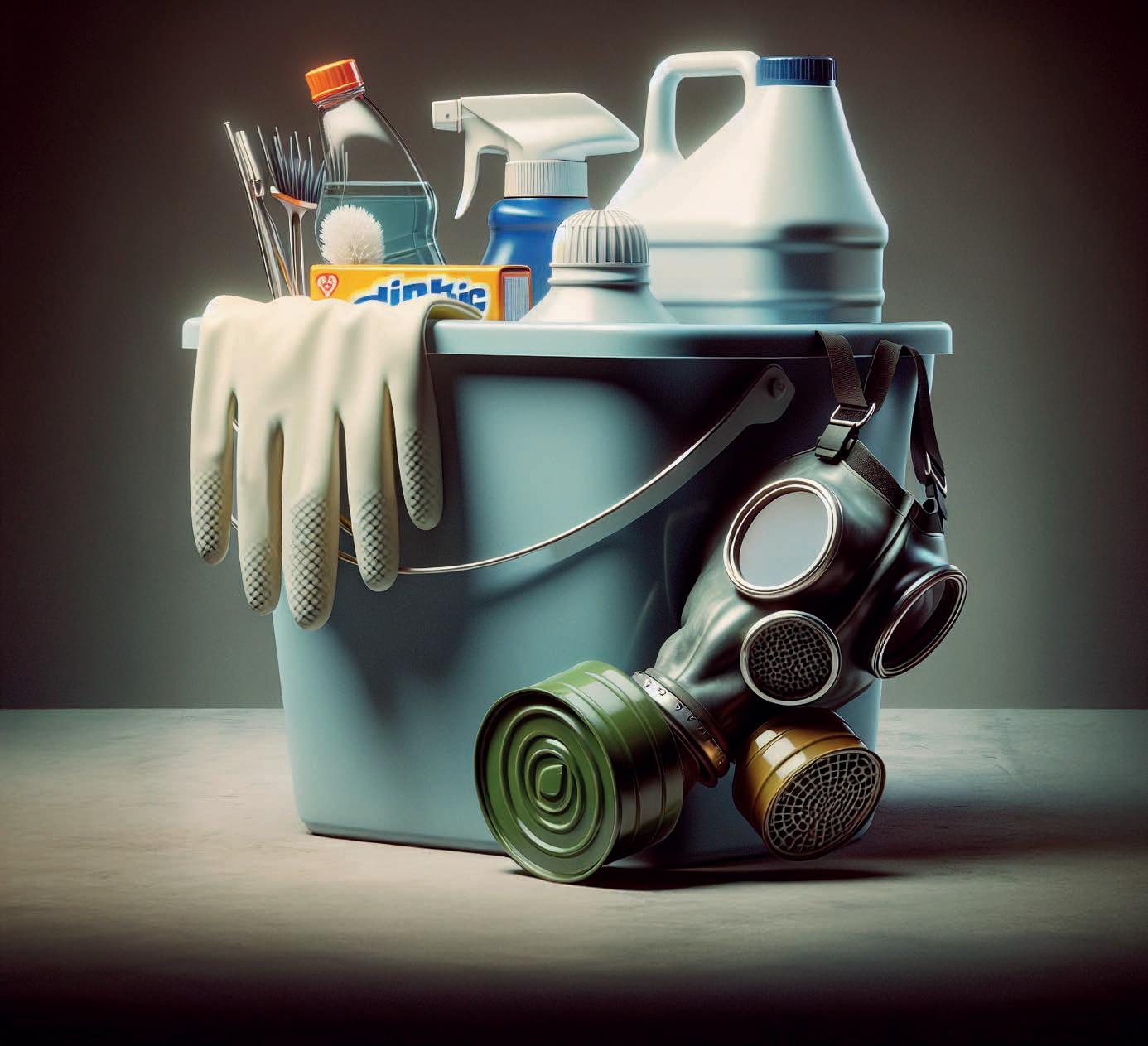
Indoor air quality is a major determinant of health and an important public health issue. It is indoors that most of the population’s exposure to air pollution takes place. In fact, the air at home, like that of the other indoor environments we frequent, is anything but clean. Indoor air pollutants are many and are capable of
affecting and worsening people’s health, with acute short-term or chronic effects. Especially the health of those suffering from heart disease, hypertension, strokes, respiratory conditions such as COPD and asthma, allergies and other more or less serious illnesses. Indoor pollutants of particular relevance include volatile
Air Label Score was created in response to the alarming problem of indoor air pollution. Thousands of chemicals - some of them harmful - can be emitted from cleaning and sanitising products, but also from objects and furnishings such as furniture, paints and building materials.
While global attention to outdoor air pollution is very high, interest in indoor air pollution, which is often more polluted than outdoor air, is still rather limited. The air in enclosed spaces, in which we spend 85% of our time, is in fact up to 10 times more polluted than the air outside.
Emissions from deodorants, perfumes, detergents and cleaning products are also a source of this pollution. Breathing in such emissions can negatively
Let’s talk about
organic compounds (VOCs), suspended particulate matter (PM10, PM2.5, UFP or ultra ne particles), polycyclic aromatic hydrocarbons (PAHs), polychlorinated dibenzo-p-dioxins and polychlorinated dibenzofurans (PCDD/Fs) polychlorinated biphenyls (PCBs), per uoro- and poly uoroalkyls (PFASs), products of combustion in poorly maintained or poorly connected or unconnected plants that may emit carbon monoxide (CO), nitrogen oxides (NOx).
Volatile organic compounds (VOCs) are chemical pollutants characterised by a certain volatility in the atmosphere. The complex mixture of hundreds of volatile organic compounds makes up TVOCs (Total Volatile Organic Compounds). The chemical properties of TVOCs vary widely and can have a strong impact on indoor air quality.
Sources of TVOC emissions are of ce equipment, cleaning detergents, disinfectants, new furniture, paints, textiles, glues, smoke. The health effects of TVOCs depend on their chemical composition, the amount of exposure and the surrounding ventilation: they range from sensory discomfort to serious alterations in health status. Some of them are recognised carcinogens. The Ministry of Health has suggested that
indoor pollution by VOCs may pose a carcinogenic risk for people who spend a lot of time in con ned spaces.
A high concentration of TVOC in indoor environments has been associated with sick building syndrome.
In addition to the VOC concentration rate, other parameters that are taken into account to determine the air quality in the home are ventilation, air humidity percentage and CO2 concentration. Ventilation: air exchange should be carried out at regular intervals to keep the room healthy. It would be necessary to open the windows at least every two hours to ensure suf cient ventilation in an averagesized room. This is not always possible, especially during winter, due to the large heat loss that would occur by frequent ventilation. Humidity: too much or too little humidity is dangerous to health. The ideal air temperature in winter is 19-22 °C, with 40 to 50% relative humidity, while in summer, values reach 24-26 °C with 5060% relative humidity.
Carbon dioxide: When CO2 levels are very high, drowsiness and dizziness, malaise and headaches can occur. The maximum recommended value for interiors is generally 1,000/1,200 ppm and the limit value for of ces or schools is 1,500 ppm. With higher carbon dioxide
levels, performance, concentration and well-being are compromised. CO2 is also taken as a benchmark to assess the potential presence of other airborne pollutants in the con ned environment that could accumulate due to insuf cient air exchange.
The rst reports of indoor complaints, the so-called Sick Building Syndrome, date back to the 1970s. Those affected complain of irritation of the eyes, nose, respiratory tract and occasionally the skin as well as general symptoms such as headaches, tiredness, malaise, dizziness and dif culty concentrating. Once they leave the building, the complaints diminish. Most reports of the syndrome concern the workplace, but it can also occur in the home. Although the causes of this disease are not yet completely clear, the triggering factors seem to be multiple and may include, in addition to the presence of Volatile Organic Compounds in the air, poor ventilation, poorly maintained air conditioning systems, and the presence of mold. Controlled mechanical ventilation systems help to prevent and reduce sick building syndrome. Thanks to a continuous exchange of the air in the rooms, in fact, they allow the concentration of indoor pollutants to be considerably diluted.
















affect the health of occupants and cleaning workers. To measure the impact of such products on indoor air quality, Air Label Score was born, an innovative independent international certification alread adopted b leading cleaning brands The certification assigns a score to products based on the emissions generated, thus offering a reliable, simple and intuitive evaluation method. Created in 2019, the Air Label Score institute is now widespread in over thirty countries. Air abel Score certification as developed ith the aim of providing a transparent and scientificall rigorous evaluation s stem to measure
product emissions and help both companies and consumers make more informed choices The certification is based on an independent evaluation method and all analyses, carried out in laboratories accredited by bodies such as COFRAC and BELAC, are performed in accordance with the strictest national and international recommendations, standards, laws and regulations, including ISO standards. Each product submitted for certification goes through a comprehensive screening process, whereby the possible presence of numerous different potentially harmful chemicals is detected and uantified ased on the amount of emissions detected, the product receives a score between A+ (very low emissions) and C (high emissions).
The Digital Operational Resilience Act (DORA), an EU regulation requiring financial institutions to be better prepared against cyber threats, protecting investors and consumers, came into effect in January 2025
Technology companies are becoming increasingly important in the nancial sphere, both as infrastructure providers for those working in the sector and as nancial service providers themselves. Regulation (EU) 2022/2554, also known as the Digital Operational Resilience Act (DORA), focuses on digital operational resilience in the nancial world by establishing uniform standards to ensure the security of IT systems and networks of banks, insurance companies and investment rms in the European Union.
DORA aims to ensure that all participants in the nancial system have put in place the necessary procedures to minimise both the chances of successful cyber attacks and their possible consequences. The legislation, which came into force on 17 January 2025, requires all companies to provide reassurance that they can withstand all types of ICT (Information and Communication Technologies) disruptions and threats. The DORA regulation establishes a clear and uniform set of rules to address current and future
digital challenges, as well as an oversight framework for infrastructure and service providers, such as cloud providers. Developed in response to the challenges posed by cyber risks after the 2008 crisis, DORA is part of a broader package of reforms aimed at promoting technological development and ensuring nancial stability and consumer protection. Its provisions aim to ensure that nancial institutions are prepared to deal with cyber threats effectively, protecting the interests of investors and consumers. A signi cant

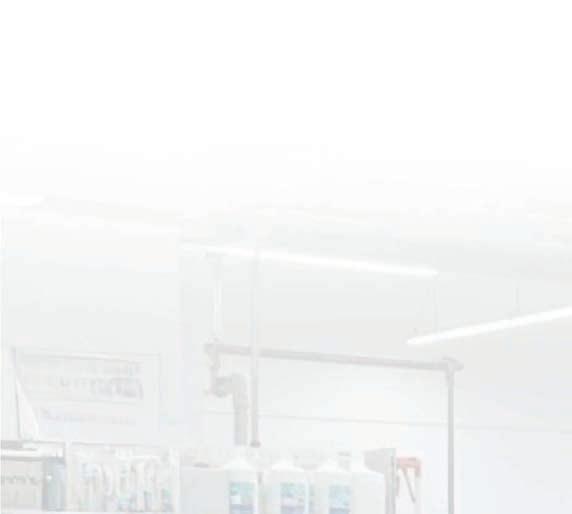
step towards creating a more secure and resilient nancial environment in the European Union.
WHICH COMPANIES HAVE TO COMPLY
DORA applies to various regulated nancial entities in the EU, including credit institutions, payment service providers, e-money companies, and investment and insurance companies. It also covers providers of account information services, crypto assets and other third parties providing ICT services. The scope also extends to those who
operate nancial and investment data directories.
In more detail, the regulation covers: credit, payment, e-money and occupational pension institutions; providers of account information services, crypto-assets, data communication, crowdfunding and ICT third parties; investment rms, alternative investment funds, management companies, credit rating agencies and administrators of critical benchmark indices; trade and securitisation data lists, central securities depositories, central counterparties and




IT AIMS AT STRENGTHENING THE IT SECURITY OF FINANCIAL ENTITIES SUCH AS BANKS, INSURANCE COMPANIES AND INVESTMENT FIRMS AND MAKING SURE THAT THE FINANCIAL SECTOR IN EUROPE IS ABLE TO STAY RESILIENT IN THE EVENT OF A SEVERE OPERATIONAL DISRUPTION
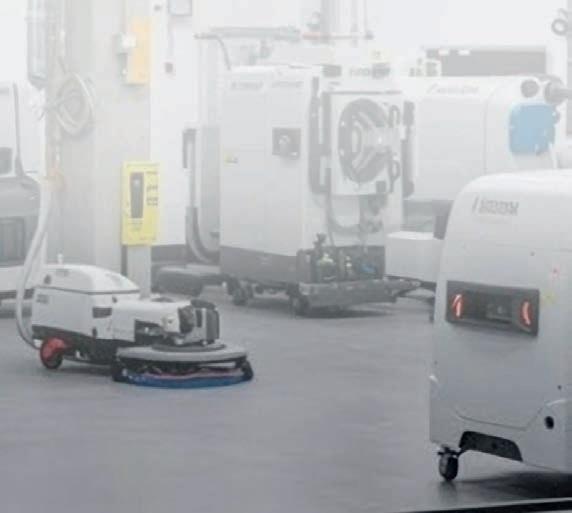





DORA STATES THAT FINANCIAL ENTITIES MUST TO DEFINE AND IMPLEMENT MEASURES TO DETECT, MANAGE, RECORD AND REPORT ICT-RELATED INCIDENTS, AS WELL AS DETERMINE THEIR IMPACT AND REPORT THE INCIDENTS TO THE DESIGNATED COMPETENT AUTHORITY
business continuity policies. Therefore, except for micro-enterprises, nancial entities must implement internal governance and control measures that ensure effective and prudent management of cyber risks and ensure that their management body de nes, approves, oversees, and is accountable for all relevant arrangements. They must have in place a robust, comprehensive and well-documented cyber risk management framework that includes the strategies, policies, procedures, protocols and tools necessary to respond quickly and effectively, as well as use and maintain up-to-date IT systems, protocols and tools that are appropriate, reliable, technologically resilient and have suf cient capacity.
Financial entities are required to adequately identify, classify and document all ICT-supported business functions, roles and responsibilities, and review risk scenarios, continuously monitor the security and operation of ICT systems and tools to minimise the impact of any cyber risks.
report IT incidents. Such incidents must be classi ed according to criteria such as impact on customers and affected counterparties and reported to the relevant authorities. More speci cally, nancial rms must de ne, establish and implement measures to detect, manage, record and report ICT-related incidents. Furthermore, they must classify incidents and determine their impact using criteria such as the number of customers and counterparties affected, duration, geographical spread and data loss. Finally, they are required to report major ICT-related incidents to the designated competent authority, which will forward it to a higher body such as the European Central Bank or the European Banking Authority.
trading venues; insurance companies, insurance intermediaries and reinsurance companies.
DORA requires nancial entities, excluding micro-enterprises, to adopt internal measures for the prudent management of cyber risks. This requirement includes the de nition and approval of relevant provisions by the management body, the establishment of well-documented frameworks for managing IT risks, the use and maintenance of reliable and technologically resilient IT systems, and the planning and implementation of
Other obligations under the regulation include: early detection of anomalous activities and identi cation of potential points of vulnerability; implementation of a comprehensive ICT business continuity policy with appropriate plans, procedures and mechanisms; development and documentation of backup policies and recovery and recovery procedures; deployment of resources and personnel to assess cyber vulnerabilities and threats, ICT-related incidents, in particular cyber attacks, and analyse their potential impact on entities’ digital operational resilience; and development of crisis communication plans to communicate at least major ICT-related incidents or vulnerabilities to customers, counterparties and the public.
DORA states that nancial entities are required to de ne and implement measures to detect, manage, record and
Financial entities must establish and maintain testing programmes that assess digital operational resilience. Such programmes must be robust and comprehensive and include the necessary assessments, tests, methodologies, practices and tools. In addition, threat penetration tests must be conducted at least every three years, based on one’s own risk pro le and taking into account operational circumstances. Only certi ed individuals, possessing the necessary skills and suitability and covered by professional liability insurance, must be used for this purpose.
Financial entities must manage third-party risks as an integral part of their overall IT risk management policy. This includes entering into contractual arrangements with ICT service providers to conduct their business activities in full compliance with legislation. In addition, they need to consider the nature, scope, complexity and importance of the role of ICT and any potential risks it entails. The DORA regulation requires them to weigh the bene ts and costs of alternative solutions
when identifying and assessing the risks present and also to include the rights and obligations of each party and the service agreement in the contract.
The regulation provides for the establishment of a supervisory framework. The framework entrusts the European Supervisory Authorities (ESAs) with the tasks of designating, on the basis of clear criteria, the ICT service providers deemed critical for nancial entities and appointing, as lead supervisor for each critical third-party ICT service provider, the ESA responsible for the nancial entity concerned. A surveillance forum is to be set up to discuss relevant developments in ICT risks and vulnerabilities and to promote a consistent approach to monitoring at Union level; to assess surveillance activities on an annual basis; to promote measures to increase digital operational resilience; and to foster best practices. General benchmarks for critical ICT service providers are to be submitted. The lead surveillance authority will be the main point of contact for critical ICT service providers. Its tasks include assessing whether each critical supplier has comprehensive, robust and effective rules, procedures, mechanisms and agreements in place. It will also request all relevant information and documentation, conduct investigations and inspections (including in third countries), specify corrective actions and issue recommendations. The lead supervisory authority must allow the European Banking Authority, the European Insurance and Occupational Pensions Authority and the European Securities and Markets Authority to cooperate with third-country regulators and supervisors on cyber risks arising from third parties. Finally, it will require the ESAs to submit a con dential report to the European Parliament, the Council of the European Union and the European
Commission on their relations with third-country authorities every ve years. Financial entities may share cyber threat information and analysis with each other, as long as this contributes to strengthening digital operational resilience and is carried out in compliance with con dentiality and competition laws.
The competent authorities have the power to impose sanctions and corrective measures on nancial entities that violate the provisions of the DORA regulation. It should be noted that no sanctions are expressly provided for ICT providers (except for critical ones).
The competent authorities have all the supervisory, investigative and sanctioning powers necessary to ful l their tasks. To ensure transparency and accountability, they must also publish on their websites the administrative sanctions and remedial measures established, indicating the type and nature of the violation and the identity of the persons responsible.
Check Point Software Technologies presented its cybersecurity predictions for 2025, highlighting the main challenges organisations will face this year in a rapidly changing technology landscape. As businesses increasingly adopt new technologies, an increase in AI-driven attacks, quantum computing threats and cloud vulnerabilities are expected to rede ne the world of cybersecurity. One of the main trends concerns the use of arti cial intelligence by cybercriminals. This year, AI is and will continue to be a key element in cybercrime, enabling the creation of highly targeted phishing attacks and malware that can adapt to data in real time to escape detection. Even less experienced hacker groups will be able to exploit AI-based tools, democratising cybercrime and increasing the frequency of large-scale attacks. Ransomware are becoming increasingly
sophisticated, with a focus on critical supply chains.
Thanks to AI-enhanced phishing e-mails and deepfake techniques, targeted attacks will affect entire sectors, increasing the risks to vital infrastructure. At the same time, the misuse of AI in companies may lead to serious data breaches, especially if employees inadvertently share sensitive information with external platforms. Organisations will therefore have to implement strict governance policies to monitor the use of AI tools and ensure privacy protection.
Quantum computing represents another emerging threat. Although large-scale quantum attacks are not yet an imminent reality, sectors such as nance and healthcare must begin to prepare by adopting quantum-resistant encryption solutions to prevent future breaches. Another worrying cybersecurity phenomenon highlighted by Check Point is the exploitation of social media and deepfakes. Cybercriminals are starting to use these tools to create sophisticated scams and digital imitations, threatening not only the security of companies, but also the integrity of nancial transactions. To counter such attacks, advanced AIbased defence solutions are needed. In response to these challenges, security operations centres (SOCs) need to use AIbased assistants to manage large volumes of data and improve threat response times, thereby optimising security operations. The convergence of CIO and CISO roles is another emerging trend, driven by the adoption of AI and hybrid cloud environments, facilitating integrated risk management.
Finally, cloud security platforms and Zero Trust architecture are becoming critical to protect multi-cloud environments and mitigate risks related to the expansion of IoT, which will be a major attack surface for cybercriminals. Organisations need therefore to evolve towards a proactive and automated security approach to stay ahead of emerging threats.
NICCOLÒ LUONGO marketing specialist


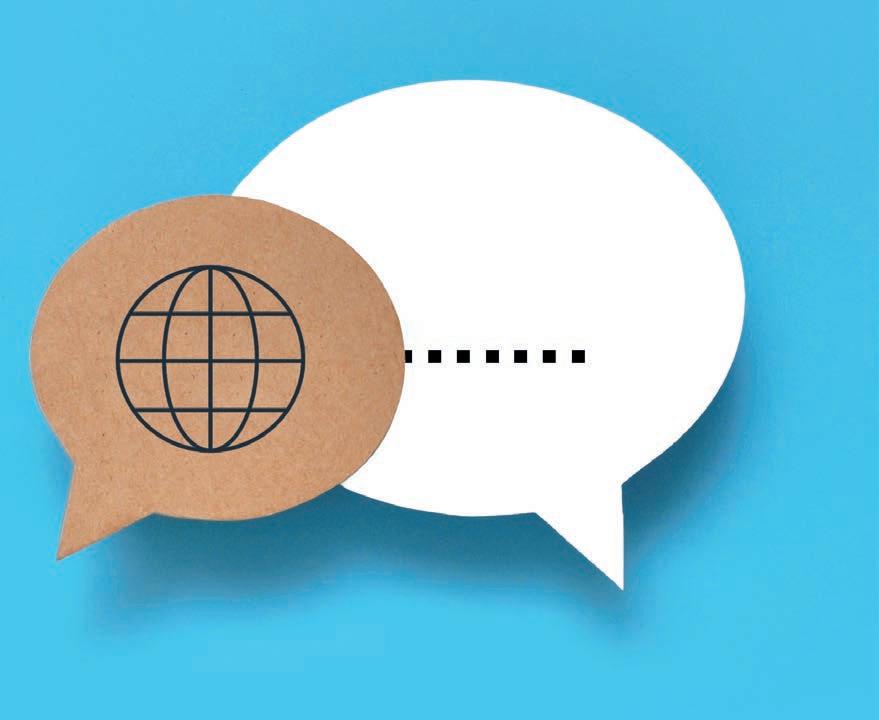
The right words can turn a simple cleaning service into an unforgettable experience. When promoting your business, the language you use is key to winning new customers and retaining existing ones
Words matter! The language you choose to describe your services is not just a matter of grammar, but a powerful tool of persuasion. Words have the power to evoke emotions, create mental images and convince people to take action. When describing cleaning services you should avoid generic phrases such as “thorough cleaning”, better to be speci c, describing your services in detail. Words
that create a sense of urgency and value should be used to be persuasive. It is good to remember that emotions drive decisions and therefore emotionally engaging language should be used, language that evokes positive feelings such as serenity, freshness, well-being. One could insert words such as “refreshing”, “sanitised”, “safe” and “immaculate”. Emotions are also powerful motivators.
A customer might read a description like “We will transform your home into an oasis of peace and cleanliness, where you can nally relax and recharge your batteries”. The words you choose de ne the essence of the company. Do you want to convey an image of professionalism, reliability, eco-sustainability or perhaps an attention to detail? Each word contributes to building brand identity.
Let’s talk about
WRONG CORRECT
We clean oors e polish oorsuntil they shine
We offer cleaning ser ices e transformyourspacesintooases of cleanliness and well being
We sanitise en iron ents e ridyourspace of allergens and bacteria,ensuring ahealthyenvironment for all
We clean athroo s e transformyourbathroomsintosanctuaries of freshness and hygiene,usingeco friendlyproducts and advancedcleaningtechniques
We dust the furniture e eliminatedust and allergies,leavingyourfurniture shiny and protected
We acuu carpets e reinvigorateyourcarpets,removingdeep seated dirt and prolongingtheirlife
The language used must also be able to express the desired results. People are looking for solutions to their problems. It must therefore be emphasised how the services offered can solve their concerns. In order to create a sense of value, you have to make potential customers understand why they should choose the services you offer by highlighting the unique bene ts offered, such as environmentally friendly products, highly quali ed staff or satisfaction guarantees. Language is the bridge to customers. Using a friendly and welcoming tone creates a relationship of trust and builds loyalty. The goal is to make potential customers see themselves already enjoying the bene ts of your services. Painting a mental picture of how their life will improve after their space is cleaned will make them more likely to invest in the services offered. For example, one could say: “Imagine coming home after a long day and being greeted by a clean, tidy and fragrant environment. Feel free to relax and enjoy your space without worrying about cleaning.”
In addition to cleanliness, bene ts and other advantages such as saving time, reducing stress or a healthier environment should be emphasised and emphasised. Sensory language helps to describe how clean spaces stimulate the senses (sight, smell, touch). The message should always be customised, adapting it to the target group and the speci c characteristics of the service. Language is a powerful marketing tool. By using well-chosen words and creating positive mental images, you can convince potential customers. It is not just about cleaning up, but about offering an experience that exceeds expectations. It is crucial to call the customer to action, e.g. by offering a free consultation, creating a sense of urgency, offering a time-limited promotion to encourage readers to act now. Inviting the customer to leave a review is also a way to stimulate them to action.
In order to create a personalised communication it is good to ask yourself what type of customer you are addressing
(e.g. families with children, of ces, ats), which of the services offered is the most in demand (e.g. deep cleaning, window cleaning, sanitising) and nally what is the strong point to focus on (e.g. ecological products, highly quali ed staff, exibility). The language should re ect the personality of the company and the tone of voice should be consistent with the brand. Messages should therefore be customised, adapting them to the type of customer you want to attract. In addition, one must be authentic, avoiding the use of catchphrases and clichés.
ANALYSING AN EXAMPLE
Suppose we have a cleaning company specialising in houses with pets. Here is an example of how we could ‘paint a mental picture’ for a potential customer: “Imagine you come home after a long day at work and are greeted by an atmosphere of peace and tranquillity. Your pet jumps out at you, happy to see you again, but you don’t have to worry about hairs strewn on the sofa or paw marks on the oor. Thanks to our specialised cleaning service for homes with pets, your home will always be clean, sanitised and sweet-smelling. You can relax and enjoy the company of your pet without worries, knowing that we take care of everything else.”
In this example we have highlighted a speci c problem, namely the presence of pets and the related cleaning problems. We created a living image: the customer can visualise himself returning home and nding a clean and relaxing environment. In addition to cleanliness, we mentioned tranquility and the possibility of enjoying the company of the pet, thus emphasising the bene ts of our service. Finally, we used sensory language: “scented” evokes a sense of freshness and cleanliness.








Like every year the International Labour Organisation, the United Nations agency for the world of work, published the usual agship report to inform about global policies and to promote key insights and innovative solutions for the world of work.
The global economy continues to expand but is losing steam. This is slowing down improvements in labour markets and testing their resilience. Global growth


rates remained stable in 2024, and 2025 tepid growth is testing labour markets but are expected to slide over the medium term. In ation rates have come down and are expected to decelerate further to hit target rates over the medium term. This seems to bode well for restoring purchasing power and consumer demand, but above-average in ation in services is slowing down progress on disin ation. Although global trade is expected to grow


faster than gross domestic product (GDP), manufacturing remains subdued and a surge in cross-border trade restrictions is weighing down the sector. These trends will likely slow down the improvements labour markets witnessed after the pandemic. Rapidly decelerating in ation rates and strong growth in a few major economic centres have helped the global economy to stabilize. Headwinds have set in, however, as geopolitical frictions









have risen and both monetary and scal policies have returned to pre-pandemic stances. Demographic shifts in advanced and some large emerging economies continue to be felt, while labour shortages have somewhat eased but not completely disappeared. Especially among European countries, labour hoarding remains high, preventing a faster return to pre-pandemic trends. Investment rates have fallen again and energy price hikes have taken a toll on industrial production.
On the back of weaker growth, in ation rates came down in 2024, approaching the target rates of most central banks. Monetary policy rates have started to decline again, after reaching levels last seen in the 1980s. After failing to properly anticipate the supply bottlenecks caused by the pandemic, central banks have managed to bring in ation rates down without causing a major labour market recession. Nevertheless, price levels remain elevated, and in ation rates have yet to drop to target rates in much of the developed world. However, further tightening, especially by scal policymakers, would run the risk of causing serious social disruption as some high-in ation countries have recently


experienced while trying to bring down their in ation rates.


In 2024, global employment expanded in line with a growing labour force, keeping the global unemployment rate steady at 5 per cent, similar to that of 2023. At the same time, employment growth remained too weak to have a signi cant impact on persistent decent work de cits around the world. Young people, especially, continue to face much higher unemployment rates, with few signs of improvements. With the return to pre-pandemic levels of informality and working poverty, the job recovery has lost much of its ability to generate further improvements and close the gap with the targets of the Sustainable Development Goals (SDGs). As the economic and social outlook remains highly uncertain - with geopolitical frictions, rising costs of climate change, and unresolved sovereign debt risks - the resilience of labour markets is being tested. Low-income countries appear to be particularly vulnerable, since progress in decent work creation has been slowest in these countries. Labour force participation has declined slightly, and this has weighed on employment growth. Large differences exist between low-income countries where

participation rates have declined across the board and high-income countries where labour force participation has increased, especially among older workers and women. Gender gaps in participation remain large, since signi cantly fewer women than men participate in the labour market. Where gaps have been falling, this has often come about not from improved female participation but from a continuous decline in male participation rates, especially among young men. Against a gradual decline in labour force participation, the jobs gap has continued its pre-pandemic downward trend but is expected to stabilize over the next two years.


Although in ation rates have come down, wage growth has not fully caught up with the pandemic-related loss of earnings, in part because of weak employment growth. Global unemployment has remained steady, but real wage growth has picked up only in a few advanced economies with particularly strong labour demand. In most countries, real wages have not recouped the losses incurred during the pandemic years and the in ationary episode that followed. Part of the reason that real wage growth has remained weak has to


EMPLOYMENT GROWTH BY COUNTRY INCOME GROUP, 2019-26 (percentage)

EVOLUTION OF REAL WAGES AND LABOUR PRODUCTIVITY, WORLD (index, 2020 = 100)

GLOBAL EMPLOYMENT BY BROAD SECTOR (percentage of total employment)

Source: ILOSTAT, ILO modelled estimates, November 2024.
Figure 1. A stable labour force participation rate, un-employment rate and employment-topopulation ratio, as well as a historically low jobs gap, underscore the fact that jobs have recovered since the COVID-19 pandemic but employment growth is slowing down. Going from a high of 2.4 per cent in 2022 to 1.3 per cent in 2024, the decline in employment growth is, in part, a result of the normalization after the post-pandemic surge. Meanwhile projections suggest a continued decline to 1.1 per cent in 2026.
Figure 2. With unemployment and the jobs gap falling to historically low levels, real wages have managed to rebound quickly after a sharp decline in 2022. However, not all losses in disposable income have been recouped yet, since real wages have not fully caught up with labour productivity developments since 2020.
Figure 3. Sectoral shifts in employment have essentially stalled since 2015; employment in agriculture remained above 26 per cent of total employment globally in 2023.
do with the shift in labour market power towards employers over the past decade. In countries for which data are available, rising market concentration correlates with a shift of labour market power away from workers towards employers, with particularly adverse effects for vulnerable groups and young people. Speci cally, labour market concentration seems to have contributed to faster automation without leading to improved labour productivity.
Productivity growth continues to follow a secular downward trend after a short blip during the pandemic. Global labour productivity growth has fallen by half a percentage point from the pre-pandemic long-term average. Many countries that have yet to reach high-income status have seen their productivity growth rates fall rapidly. Countries are searching for answers to address this slowdown. Part of the slowdown is linked to slowing structural transformation towards manufacturing and highly productive services. Moreover, productivity growth within sectors has weakened as well,
especially in industrial and modern services, despite signi cant investment in robotization over the past decade. Major industrial powerhouses are facing serious dif culties in achieving further industrial growth. High (and rising) energy prices as a result of international con icts and the energy transition are only part of the problem, since weak industrial production pre-dates recent dif culties. At the same time, productive services are struggling to make up the shortfall left by industry. More than industry, (modern) services such as business services and information and communications technology (ICT) rely on a well-educated workforce and well-maintained public infrastructure. Absent such a skilled workforce and developed infrastructure, large spatial inequalities emerge that prevent more equitable growth across a country’s territory. Even within countries that have undergone a transformation towards manufacturing and modern services such as ICT and business services, inequality has not systematically declined. Such spatial inequalities within countries can account for the lack of convergence in living standards and productive employment between developing and advanced economies.
In many emerging and developing economies, both manufacturing and modern services are failing to produce suf cient spillovers to generate productive employment outside a few advanced hubs. Without suf cient infrastructure investment, quality education and other public services, a few highly productive agglomerations will become congested and will not generate positive spillovers throughout the country’s territory. To spread the bene ts of development more widely, countries have further explored the role of industrial policies. With the rapid rise of new digital technologies, many countries are trying to tap into the developmental potential of arti cial intelligence by designing - and often implementing - speci c industrial policies geared to local digital ecosystems. However, given the
Increased investment to accelerate the transition towards green energy and mobility has caused policymakers to focus their industrial policies in these areas. Since 2023, there has been a further increase in renewable energy jobs to 16.2 million, more than half of all jobs in the energy and utilities sector. Large-scale subsidies and expansion of public infrastructure, with respect to electric charging stations and the electricity grid, have contributed to a surge in solar and hydrogen power generation that has helped to promote a rapid increase in the number of electric vehicles. However, job creation in renewable energy production is unequally distributed around the globe. Almost half of new green job opportunities have been in Eastern Asia.
signi cant requirements in terms of skills, digital infrastructure and energy cost, few countries and jurisdictions are able to tap into the high-value-added end of the digital economy. In contrast, in many countries - including some of the digitally advanced countries in South-Eastern Asia - a rising number of workers are being absorbed by data and gig platform work in which they face poorer working conditions and fewer prospects of occupational progression.
In Eastern Europe the Russian Federation’s aggression in Ukraine has contributed to reduced educational participation, the mobilization of young soldiers, and reduced investment in job creation for young people. Northern, Western, Southern and Eastern Europe are all on track to meet the SDG target 8.6 commitment to “substantially reduce the proportion of young people not in
employment, education or training” by 2030. In a context of ageing populations and labour shortages, the effective management of labour migration is a major policy consideration. One means of lling skills gaps is through inward migration. However, the process is complicated by various degrees of anti-migrant sentiment, challenges in integration, and the recognition of quali cations (World Bank 2024). Equally, careful management of the out ow of migrants helps prevent skills gaps and labour shortages. This is particularly true for migration from Eastern and Southern Europe to Northern and Western Europe. Efforts are being made to incentivize migrants to return, as well as to limit the out ow (EBRD 2024). In Portugal, for instance, tax breaks and incentives for the under-35s are being considered to disincentivize young people from emigrating as well as to attract young people to the country (Katanich 2024). Labour migration, investment and trade movements into economies on the periphery of the Russian Federation are bolstering the labour market indicators of these economies. Economies in the Caucasus and Central Asia are receiving Russian nationals as a result of the war in Ukraine and mobilization. These countries offer straightforward processes for opening bank accounts and gaining residency that facilitate the relocation of Russian migrants, who bring with them capital and skills (EBRD 2024). For instance, Georgia has reportedly received around 20,000 high-skilled entrepreneurs from the ICT and creative industries, and Kazakhstan has seen a boom in the creation of ICT enterprises. At the same time, sanctions against the Russian Federation have contributed to the pivoting of trade to the periphery economies. All these factors are serving to bolster labour market indicators in Central and Western Asia, although in the headline numbers of the whole region the Russian Federation offsets some of these improvements.








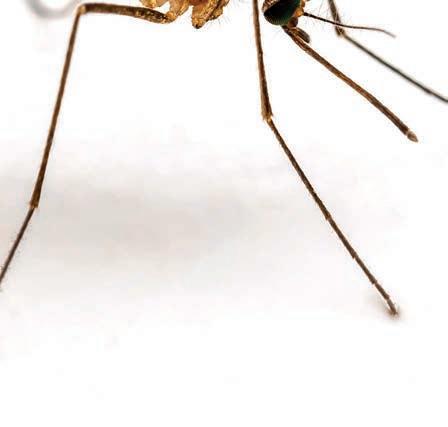

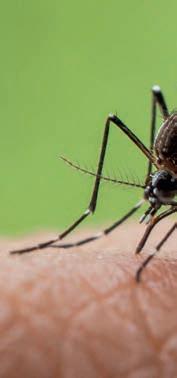

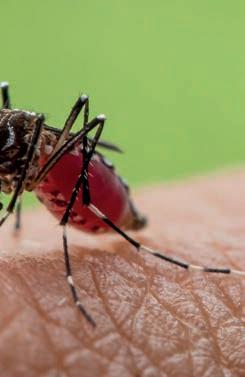
GIORGIO CHIARANZ
An overview of the biology of the main mosquito species, analysing how their prevalence and risk of disease transmission have changed over time, as well as strategies for their control
Mosquitoes have adapted and multiplied in a wide variety of environments. These insects, which have always been a source of annoyance to the population, are also responsible for the transmission of viral diseases known as arboviruses (acronym for ARthropod-BOrne Viruses), caused by viruses transmitted by arthropods. In this article, we will explore not only the biology of the main mosquito species, but also how their prevalence and disease risk have changed over time. The ght against mosquitoes is an issue that involves
various institutional and societal levels, as it is a phenomenon that directly affects public health, tting right into what is called the ‘One Health’ model, i.e. a health model based on the integration of different disciplines. Belonging to the family Culicidae, mosquitoes are insects that play a key role in natural ecosystems as prey for various predators. However, their haematophagous habits and ability to transmit pathogens make them a threat to human health. Let us look at the most problematic species below.

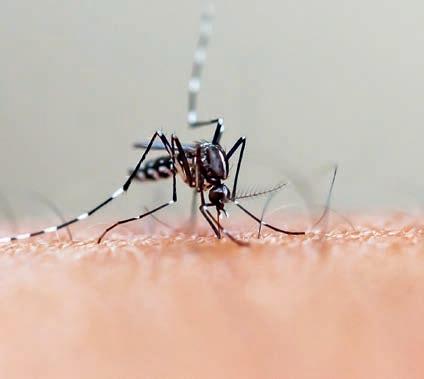
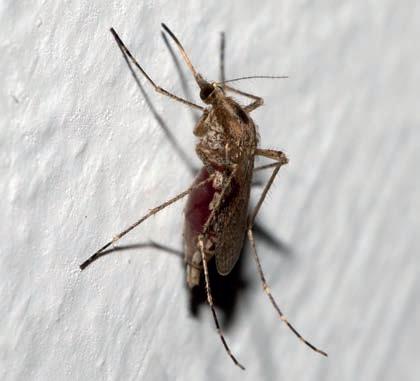
The common mosquito is probably one of the best known and most widespread species. These insects are predominantly nocturnal and thrive mainly in urban and suburban environments. Culex pipiens is known for its ability to transmit the West Nile virus, a disease that can be serious, especially in the elderly or those with compromised immune systems. It is also the main vector of Filaria in dogs. The proliferation of this mosquito is favoured by the presence of stagnant water, such as that which accumulates in drains, ditches and ponds in unkempt gardens. Its life cycle is short, with females laying their eggs on the surface of the water, where the larvae quickly develop into adults.
Native to South East Asia, also known as the tiger mosquito, Aedes albopictus was introduced to Europe in the 1990s, probably through the international trade in used tyres, which provided ideal environments for its eggs to develop. Its ability to adapt to different urban environments facilitated its rapid spread, making it one of the most invasive species. Aedes albopictus is mainly active during the day and is particularly aggressive. This mosquito is also a known vector of viruses such as Chikungunya, Dengue and Zika, making it a public health hazard. Despite its tropical origins, its eggs are able to survive the winter, which allows
it to survive in colder climates. Its impact on people’s daily lives is considerable, as it is able to infest gardens, courtyards and other residential areas.
These species, which originated in Korea and Japan respectively, have become an object of concern in Mediterranean countries due to their resistance to cold. Although Aedes albopictus has dominated the scene, the presence of Aedes koreicus has marked a point of attention. This species is particularly dangerous because, being more resistant to lower temperatures, it can spread to regions where the tiger mosquito cannot survive. Aedes japonicus, on the other hand, has had a slower but still signi cant spread. Both species can act as vectors for arboviruses, but although data on their ability to transmit diseases is still incomplete, experts fear they may become a threat in the future.
Aedes aegypti is one of the most dangerous mosquitoes in the world. Known to be the main vector of the Dengue, Zika and Chikungunya viruses, its presence in Europe has been limited for a long time, but with climate change and rising average temperatures, there may be new opportunities for this species to spread. Individuals of Aedes aegypti are small, black in colour with white spots on their legs and head, and are very
aggressive. They prefer to breed in small containers of stagnant water, such as ower pots, bottles or buckets, often in the vicinity of human dwellings, facilitating their spread in urban areas.
It is mainly found in coastal areas or near wetlands. This mosquito is particularly active at dusk and dawn and has a strong ability to move over long distances. Its ideal habitat is temporary waters, such as those formed by rainfall or tides. Its invasiveness and aggressiveness can be so strong that it causes enormous inconvenience.
The future projection is far from reassuring: climate change is altering the natural habitats of many mosquito species, extending their range to new areas. Rising temperatures, erratic rainfall and more extreme weather events could make mosquito control even more dif cult. In addition, globalisation and increased international travel are favouring the spread of arboviruses from distant countries, such as tropical ones. Mosquitoes know no borders and, with increasing migration ows, the risk of new outbreaks is higher than ever.
There are essentially three main strategies to contain mosquitoes. Anti-mosquito treatments involve the use of biological

products that eliminate mosquito larvae without damaging the environment. They are essential to reduce the adult mosquito population.
One Health is an approach that recognizes that the health of people is closely connected to the health of animals and our shared environment. One Health is not new, but it has become more important in recent years. This is because many factors have changed interactions between people, animals, plants, and our environment. Human populations are growing and expanding into new geographic areas. As a result, more people live in close contact with wild and domestic animals, both livestock and pets. Close contact with animals and their environments provides more opportunities for diseases to pass between animals and people.
The earth has experienced changes in climate and land use, such as deforestation and intensive farming practices. Disruptions in environmental conditions and habitats can provide new opportunities for diseases to pass to animals.
The movement of people, animals, and animal products has increased from international travel and trade. As a result, diseases can spread quickly across borders and around the globe.
These changes have led to the spread of existing or known (endemic) and new or emerging zoonotic diseases, which are diseases that can spread between animals and people.
One Health issues include emerging, reemerging, and endemic zoonotic diseases, neglected tropical diseases, vector-borne diseases, antimicrobial resistance, food safety and food security, environmental contamination, climate change and other health threats shared by people, animals, and the environment.
Adulticidal treatments by applying insecticides to kill adult mosquitoes reduce the spread of disease.
The removal of breeding sites (all forms of stagnant water, from garbage cans to storm drains) allows the larvae to limit their proliferation.
Vector-borne diseases are a major public health problem: the World Health Organisation (WHO) estimates that they cause more than 1 billion human cases and 1 million deaths each year, accounting for about 17% of the world’s total cases of communicable diseases. In 2017, the World Health Assembly endorsed the new WHO Global Strategy 2017-2030 against vectors. Managing cases of arboviruses requires a strategic and coordinated approach. Prevention is key, but a rapid and targeted response to outbreaks is also crucial. Another important aspect concerns communication between the health authorities and the population to ensure that people are aware of the risks and the measures to be taken.
If your region/country does not have a speci c strategic plan, it is important to remember that spraying insecticide everywhere is not a solution. Only through joint action by removing breeding sites, anti-parasitic and adulticidal interventions as an emergency solution will you achieve the desired results.
The ght against mosquitoes and arboviruses continues to be a growing challenge for Europe and the world. With climate change, the evolution of mosquito species and increased international travel, diseases transmitted by these insects are set to remain a constant threat. However, through containment strategies, surveillance and collaboration between public and private entities, it is possible to protect public health and minimise the risk.







INSECTICIDES
AIR CONTROL S®
DISTAIR S®
WITH NATURAL PHYRETHRUM
DISINFECTANTS
AIR CONTROL SANITIZER®
VIRUSES - BACTERIA AND YEASTS
FRAGRANCES
AIR CONTROL
CLASSIC® and PLUS®
TWO TYPE OF CONCENTRATIONS
PRODUCTS AND SOLUTIONS MADE IN ITALY
BY THE EDITORIAL STAFF
The professional cleaning industry has undergone a significant transformation, driven by advancements in technology, research, and product development. As demand for efficiency, sustainability, and hygiene standards grows, companies are investing in cutting-edge solutions to enhance cleaning performance, reduce costs, and minimize environmental impact. From automated cleaning robots and AI-driven sanitation systems to eco-friendly detergents and advanced filtration technologies, innovation is reshaping how businesses approach cleanliness. Research in antimicrobial coatings, touchless disinfection methods, and smart monitoring systems has led to more effective and sustainable cleaning solutions, particularly in healthcare, hospitality, and industrial sectors. Moreover, the rise of green cleaning products and biodegradable solutions reflects a shift towards environmentally responsible practices. IoT-enabled equipment and data-driven analytics are optimizing resource usage, improving safety, and ensuring compliance with stringent regulations.
With continuous R&D, the professional cleaning sector is evolving to meet the challenges of a changing world, offering more efficient, ecofriendly, and technologically advanced solutions.
4CleanPro has been a trusted name in the industry for over 20 years, known for the quality and durability of its products. Built with high-quality components and stainless steel frames, its machines offer exceptional strength and reliabilit The compan ensures professionalism, e cienc , and prompt service while maintaining long-term collaborative and support relationships.

The Mira Ergo 40 features a new, ergonomic design with an improved handle that provides a greater lever arm, making it easier to maneuver. It includes a 5-liter recovery tank with a quick-release system for effortless emptying. The lower section remains unchanged, maintaining the same reliable components as the previous version.
The Twist 40 was created to meet the growing demand for eco-friendly and sustainable cleaning solutions. Designed with environmental responsibility in mind, it e cientl cleans and sanitizes up to 1,200 m² per hour while using just 17 liters of water and consuming only 0.5 kW of energy.

COMAC.IT
For more than 50 years Comac has been designing machines for professional cleaning including oor scrubbers, s eepers, single disc machines, vacuum cleaners, high pressure ashers and saniti ers able to solve cleaning issues in different conditions of use and on an t pe of surface Than s to its abilit to innovate and re uvenate itself, omac has been able to meet the challenges of the cleaning market becoming a major company in the sector.


S is omac s oor scrubber cobot designed to be a collaborative and intelligent cleaning companion capable of combining performance and productivit to ta e professional cleaning to the ne t level Designed to adapt to an environment, S is perfect for offering professional cleaning in airports, shopping centres, supermar ets, schools, o ce buildings, conference centres, healthcare facilities, arehouses and distribution centres.

ounded in , alpi speciali es in innovative professional cleaning solutions ased in iella, tal , it serves cleaning companies, hospitals, schools, and communities ommitted to ualit and sustainabilit , alpi uses premium materials for durabilit and full rec clabilit ertified S , S , SA , and covadis Silver, it upholds high standards hile continuousl improving through e perience and innovation


S is a omac industrial ride on s eeper, able to offer ma imum use friendliness and great comfort for the operator Designed to give great productivit and effective, affordable cleaning, the S is suitable for cleaning indoor and outdoor oors and surfaces in industrial environments, arehouses, shopping areas, car par s and in the public, automotive and transport sectors and areas measuring up to , s m
igh level hospitalit is one of the most important settings in this regard. To adapt to the most prestigious spaces, alpi has developed the range of hotel trolle s in the Solight ouse eeping line The Service ar trolle allo s for impeccable, discreet, and organi ed minibar restoc ing All trolle s in alpi s Solight ouse eeping line are fully customizable to meet the specific needs of the hotel through the ne alpi onfigurator

The combination of all aspects at the core of alpi s principles and values begins ith designing products based on co Design This means creating items that blend high ualit , innovation, and sophistication hile prioritizing sustainability and environmental respect This virtuous approach is no the foundation of alpi s ne pro ect: the ubi trolle ith colabel certification
imap designs and manufactures oor cleaning machines in tal and e ports them to countries orld ide The range includes scrubbing machines, autonomous scrubber dr ers, s eeper scrubbers, s eeping machines, dr and et dr vacuum cleaners, spra e traction cleaners, and single disc machines able to meet an ind of cleaning need, e uipped ith innovative technological solutions that enable to achieve high h giene standards respecting the environment

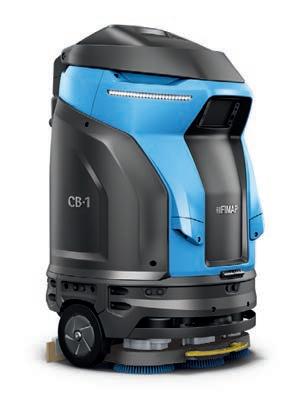
imap s is a collaborative robot hich, ta ing over the most time consuming and repetitive tas s, allo s personnel to have more time for more demanding and s illed obs ts collaboration adds value to the cleaning operation and ma imises productivit carr ing out part of the ob, it reduces time and cost ts ease of programming and use ma es the the ideal all for improving cleaning performance
imap s S ride on s eeper can or at a speed of m h, for continuous hours, and cover a path ranging from cm ith the central brush alone, useful in narro spaces, to cm ith the t o side brushes hile in the basic version the empt ing of the debris hopper is manual, in the ro and lus versions it is automatic at height The automatic dumping can lift up to g at cm height
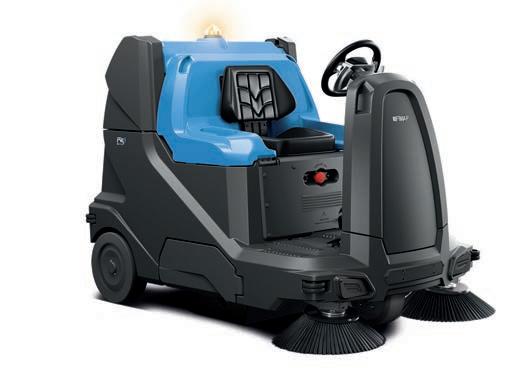
genia is a d namic and evolving compan ith over ears of e pertise in h giene solutions Dedicated to sustainabilit , it develops innovative, eco friendl products that enhance guest e periences hile protecting the environment ommitted to ualit and innovation, genia delivers cutting edge hospitalit solutions nnovation and Sustainabilit in ospitalit Solutions ade in tal , crafted for ou


The ne toilet paper dispenser is ideal for hotel rooms, featuring an automatic drop do n refill s stem ith infinit technolog for uninterrupted suppl ts consumption reducing bra e ensures e cienc olding rolls times larger than standard, it minimi es maintenance ade of impact resistant A S, it has a e less, anti theft design for securit
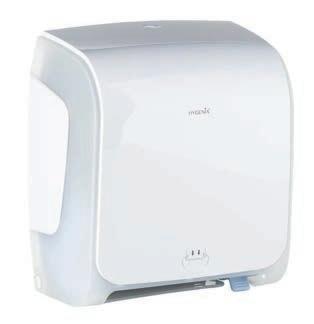
The Area ontrol s stem continuousl monitors environmental ell being, detecting real time ualit levels and parameter e ceedances t instantl alerts operators, enabling immediate cleanliness chec s and prompt intervention ustomi able to client needs, it anal es e parameters to ensure optimal environmental ualit and maintain high h giene standards
talk about
Industrie Celtex is a company specialised in the production of tissue, non-woven products and dispensing systems for the AFH market. A multinational company with 7 plants and more than 500 employees across Europe, that adopts a sustainable vision throughout the entire production chain, delivering quality and highperformance products while pursuing a reduced environmental impact.

Absolute is the paper range that makes the most of available space, time and budget. With its ultracompact format and increased product quantity, it ensures more e cient deliver , less storage space re uired and fe er refills cienc translated into cost savings and environmental sustainability: decreased CO2 emissions, halved packaging materials, and less product wastage to be processed.
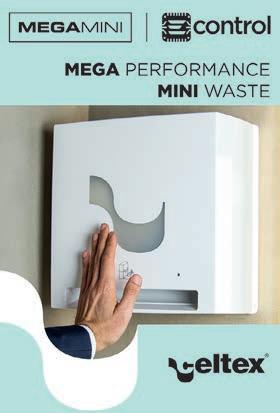
The Megamini dispensing systems combine the aesthetics of Made in tal design ith a refined anti-waste technology, ensuring maximum hygiene in bathroom areas. Manual and no-touch dispensers for paper, soap, and sanitizing gel, delivering only what is needed and minimizing unnecessary waste. Megamini: the elegant and durable solution for every environment.
For over 40 years, Orma has been the reference point for pesticide control and environmental hygiene. Always oriented to innovation and the highest excellence, Orma guarantees professionalism, quality and well-being to all operators and their customers. Download the complete catalogue on www.ormatorino.com

The Air Control System is an effective solution for controlling and managing ing insects to ensure the comfort of everyday environments. It consists of Air Control S, the insecticide (product is beeing registered under the BPR regulation in all european countries) that guarantees an immediate and effective knockdown effect, and maximum repellency against ing insects such as ies and mosquitoes; Air Free automatic diffuser with 3 dispensing intervals and operation.

Aerosol can with disinfectant action, offering rapid bactericidal, fungicidal, and virucidal effectiveness, in a 150 ml size. Its special valve, once activated, releases the entire contents in a very short time, saturating the desired space. One can of Air Control Sanitizer One-Shot covers up to 75 cubic meters.
PAPERDI.IT
Paperdi operates in the tissue sector of the paper industry, producing disposable articles for sanitary and food use. Thanks to a business development model that has always been able to reconcile economic value creation, customer and end-user satisfaction, environmental protection and human growth, Paperdi is now a reference player in the tissue paper sector and is present in more than 30 countries worldwide.
Paredes, the inventor of the autocut hand towel dispenser, designs, manufactures, and distributes innovative solutions for professional h giene and protection cienc and environmental responsibilit have always been key drivers of its growth strategy—making it the market leader in France. This commitment led to the creation of EcoAttitude, a philosophy promoting responsible consumption.

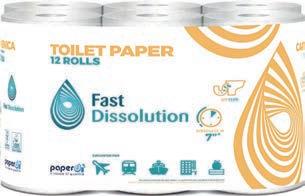
Fast Dissolution is the line of quickdissolving products from Paperdi. Softness and consistency combined with fast melting speed in a few seconds, guaranteeing performance and e cienc as the double pl toilet paper, made of pure cellulose and certified S and Ecolabel. Preventing pipe clogging is a real plus that can reduce ine ciencies and maintenance costs
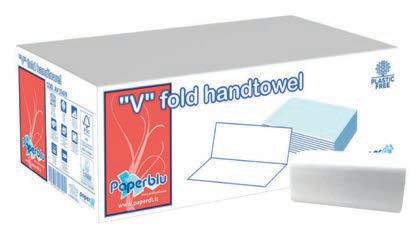
Paperdi V fold handtowel is completely sustainable according to the business development model which is based on sustainability principles and oriented towards customer satisfaction. AV51619 is a Paperdi product, 100% plastic free and completely recyclable. A product that facilitates the dispender recharge process and helps the operator to do his work in a faster way, using only one garbage to dispose of the waste.

Through its exclusive partnership with Innuscience, Paredes offers a range of biotechnologybased products as sustainable alternatives to traditional chemicals. Designed for those committed to accelerating their ecological transition, these products are highly effective, 100% natural, and safe for both users and the environment. Among them, Nu-LactiKleen stands out as a versatile, multi-purpose cleaner with biocidal action.

The Paredis Style Roll dispenser guarantees reliability, comfort, and hygiene. Its new ceramic blade enhances effectiveness and safety, hile the modern design simplifies cleaning and maintenance The updated handroll attachment, made from 100% cellulose, supports recycling efforts. With 23 models available, the Paredis Style line offers a complete range of bathroom accessories to meet all needs.
talk about
RCM.IT
RCM has been manufacturing and distributing industrial and urban cleaning machiner orld ide since As one of tal s first companies to specialize in the cleaning sector, RCM was founded in Modena - a city that embodies its entrepreneurial spirit. Built on a strong family tradition, the company is now led by the fourth generation of the Raimondi family.


GIGA is a professional, compact, and agile scrubber-dryer designed for high-performance cleaning. Ideal for medium-sized areas, it operates e cientl even in spaces with obstacles or people, leaving oors perfectl dry. With a low noise level and LED front light, it ensures discreet and safe cleaning. Its multiple washing programs and extended running time help minimize water and chemical consumption, enhancing sustainability and cost-effectiveness.

Boxer offers four mediumto-large sweepers designed for professional cleaning. The Boxer model, featuring a 315L capacity hopper, is available in batterypowered, diesel, and LPG versions. For more demanding tasks, the Super Boxer comes with a more powerful engine and an enhanced suction system, making it ideal for heavyduty cleaning in its diesel version. Easy to use and maintain, highly reliable, and cost e cient, these s eepers are particularl ell suited for rental applications.
Rubino Chem is an Italian company that designs and manufactures essences, detergents, and disinfectants for professional and domestic use, operating nationally and internationally since 1960. Thanks to its research and development activities, it offers innovative products formulated with high-quality raw materials that meet market needs, with a special focus on the environment.

Degreaser Food from the HiMiX Professional line, an ultraconcentrated, highly alkaline degreaser that effortlessly removes animal and vegetable fats, grease, oils, and burnt residues from washable surfaces. Its ready-touse liquid formula meets HACCP regulations. Ideal in various food processing areas, including hoods, ovens, grills, cooktops, trays, food displays, and more.

Glass + Inox Ultra from the HiMiX Professional line, an ultra-concentrated cleaner for glass, mirrors, steel, and washable surfaces. Its high degreasing power removes grease, limescale, rain spots, soot, fingerprints, dust, and smog, leaving an invisible protective film that delays dirt buildup. Ideal for various surfaces, including windows, glass doors, countertops and more.

On 26 February 2025, the European Commission introduced the Clean Industrial Deal, a strategy to align industrial growth with climate goals. The plan aims to decarbonize energy-intensive sectors, accelerate clean-tech production, and strengthen the circular economy by 2030. The initiative mobilizes over €100 billion to support clean manufacturing. Key measures include a €500 million pilot program with the European Investment Bank to fund long-term renewable power agreements and €1.5 billion for power grid infrastructure. Additionally, state aid rules ill be simplified to accelerate rene able energy deployment and industrial decarbonization.
The Affordable Energy Action Plan, a major component, seeks to reduce energy costs for industries, businesses, and households while cutting dependence on imported fossil fuels. The Commission also proposes an Industrial Decarbonisation Bank, backed by €100 billion from the Innovation Fund and the EU Emissions Trading Scheme, to attract private investment in clean technologies.
The Deal emphasizes circular economy principles, promoting recycling, reuse, and sustainable production to reduce waste and reliance on external raw material suppliers.
With the Clean Industrial Deal, the EU aims to maintain economic competitiveness while advancing towards its 2040 goal of a 90% greenhouse gas reduction, ensuring a sustainable and resilient industrial sector.

ISSA PULIRE, the international trade fair of reference for the professional cleaning sector, returns from 27 to 29 May 2025 at Fieramilano. The 27th edition promises to be even richer and more innovative, with already 108 new exhibitors and the introduction of new product sectors, including components, waste management and pest management.
There will also be a strong increase in foreign attendance, which to date already stands at +29.8% of foreign exhibitors compared to the 2023 edition. Also confirming the importance of the event is the visitor figure hich, one ee after the opening of the tic et o ce, alread counts more than 1100 registrations and is constantly increasing.
Admission to the exhibition is free and reserved, after registration on the event website, to all operators in the professional cleaning, sanitation and facility management sector who produce, purchase, resell and use the products of the most important brands in the sector.
The event, recognised as a platform for networking and innovation, will offer visitors the opportunity to discover the latest trends in cleaning, meet the main players in the sector and take part in a rich programme of conferences and workshops that will be held in the ISSA PULIRE LAB on topical issues, including the procurement code, sustainability and digitalisation.
MARCH 18 - 20 / 2025
The Cleaning Show London, UK cleaningshow.co.uk
MARCH 25 – 27 / 2025
Europropre Paris, France europropre.com
MARCH 31 – APRIL 3 / 2025
China Clean Expo
Shanghai, China chinacleanexpo.com
MAY 27 - 29 / 2025
ISSA Pulire Milan, Italy issapulire.com
SEPTEMBER 23 – 26 / 2025
CMS Berlin Berlin, Germany cms-berlin.de
OCTOBER 29-30 / 2025
ISSA Cleaning & Hygiene Expo Sydney, Australia issa.com
NOVEMBER 4 – 6 / 2025
Hygienalia Madrid, Spain hygienalia.com
APRIL 14 - 17 / 2026
Interclean Amsterdam Amsterdam, The Netherlands intercleanshow.com









www.dimensionepulito.it





























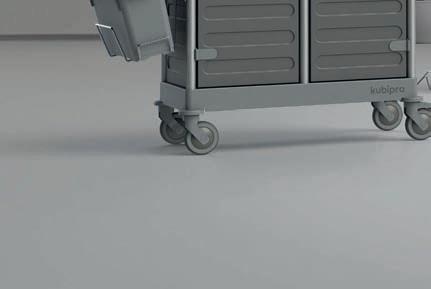



For a perfect aesthetic alignment with the Falpi Hotel trolley line